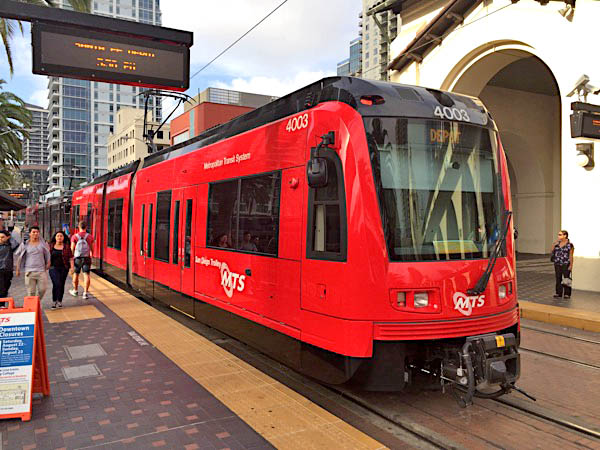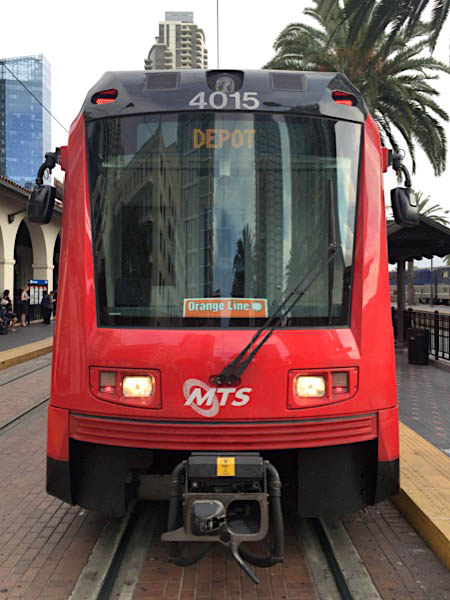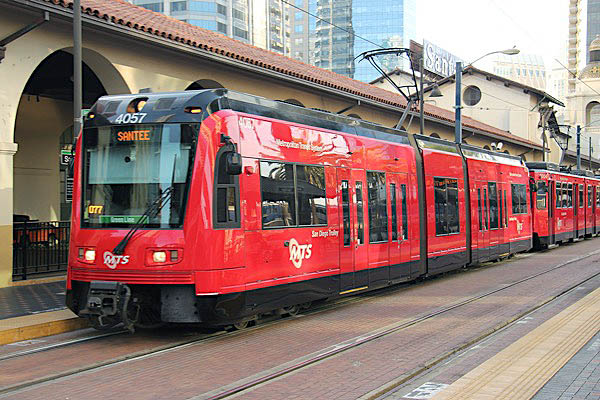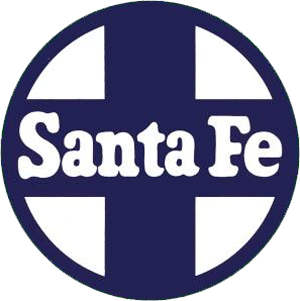
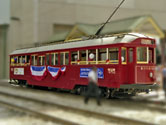






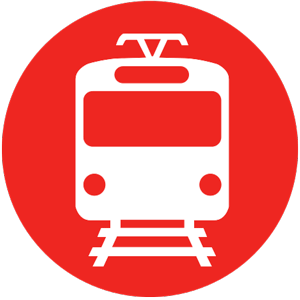 |
San Diego, CaliforniaMetropolitan Transit System |
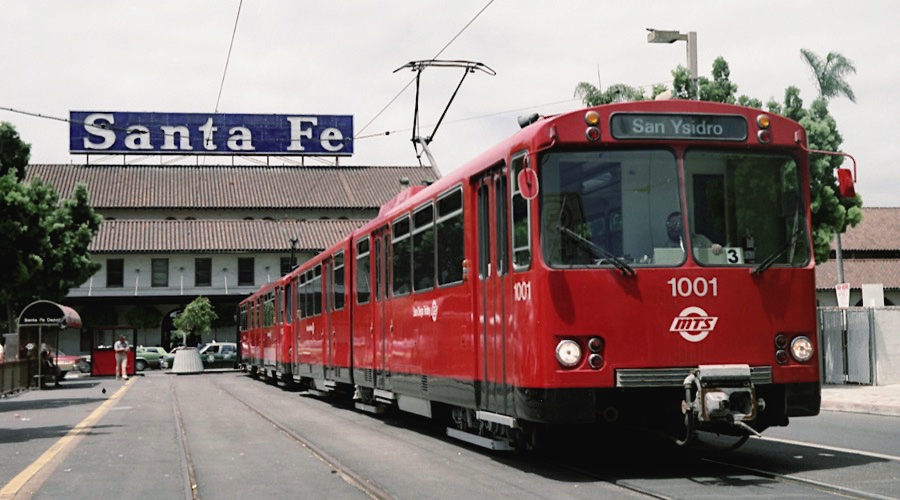
San Diego, Ca / Aug 1987 / JCH

For more than 135 years, public transit has been serving the San Diego community and helping it thrive. The positive impacts of the San Diego Metropolitan Transit System (MTS) on our communities has been, and will continue to be, far-reaching. There are thousands of MTS employees who keep the fleet of nearly 1,000 vehicles maintained and operating every day. There are hundreds of thousands of people inside those vehicles that depend on transit to be productive. The all-electric Trolleys and near-zero emission buses reduce burdens associated with negative environmental impacts. And there are many more facts that show how our public transit system is a vital component to our region.

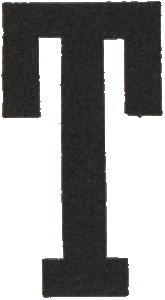 he Metropolitan Transit System of San Diego, California, operates four light-rail trolley lines utilizing three classes of German-built modern streetcar vehicles. The system was inaugurated in the summer of 1981 using the U2 series cars, and its ridership ranks in the top ten most-traveling transit systems in the United States. Rail distances total more than 65 miles, serving 62 stations in coordination with nearly 100 bus routes around the greater San Diego metropolitan area. MTS also contracts with the San Diego & Imperial Valley Railroad and the Baja California Rail Road to provide freight service to San Diego shippers over SD&AE right-of-way. SD&IV shares certain tracks with SDTI, operating during non-service Trolley hours.
he Metropolitan Transit System of San Diego, California, operates four light-rail trolley lines utilizing three classes of German-built modern streetcar vehicles. The system was inaugurated in the summer of 1981 using the U2 series cars, and its ridership ranks in the top ten most-traveling transit systems in the United States. Rail distances total more than 65 miles, serving 62 stations in coordination with nearly 100 bus routes around the greater San Diego metropolitan area. MTS also contracts with the San Diego & Imperial Valley Railroad and the Baja California Rail Road to provide freight service to San Diego shippers over SD&AE right-of-way. SD&IV shares certain tracks with SDTI, operating during non-service Trolley hours.

See also these related scrapbooks:
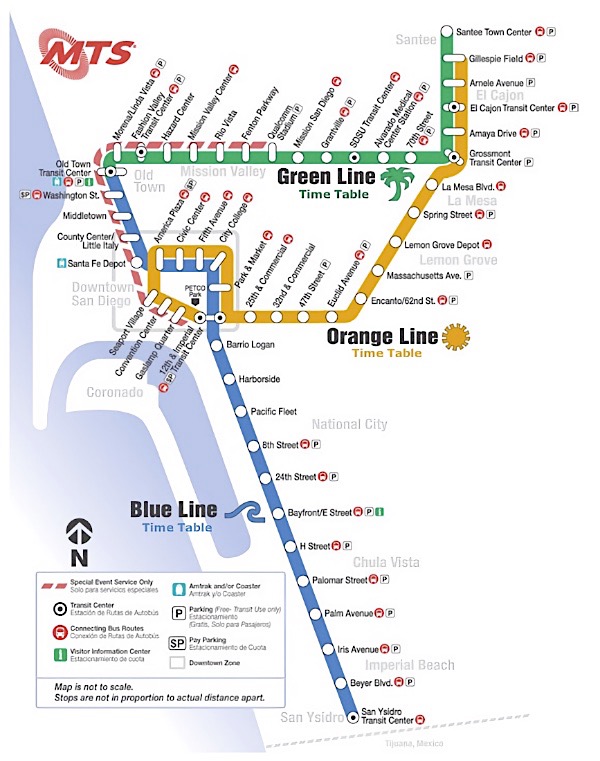
2000 system map / collection

2015 system map / collection
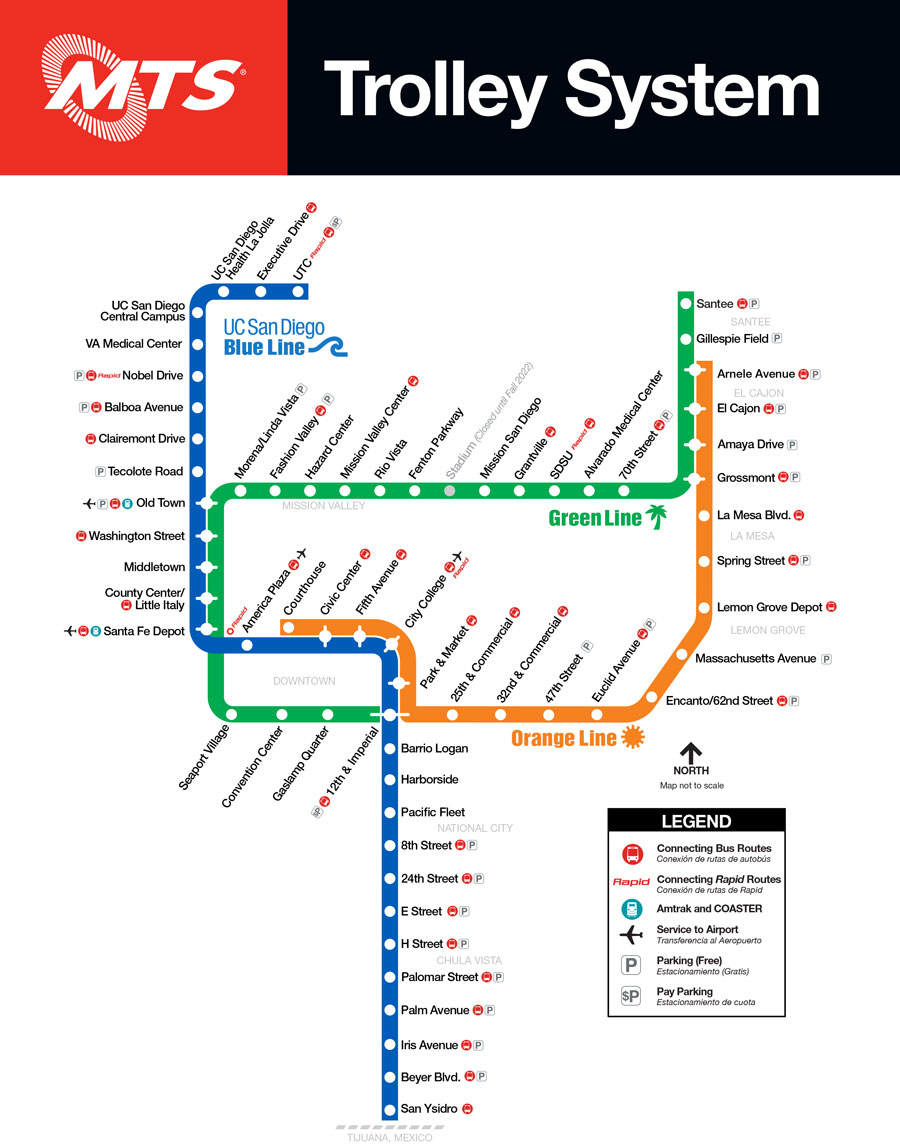
2021 system map / collection
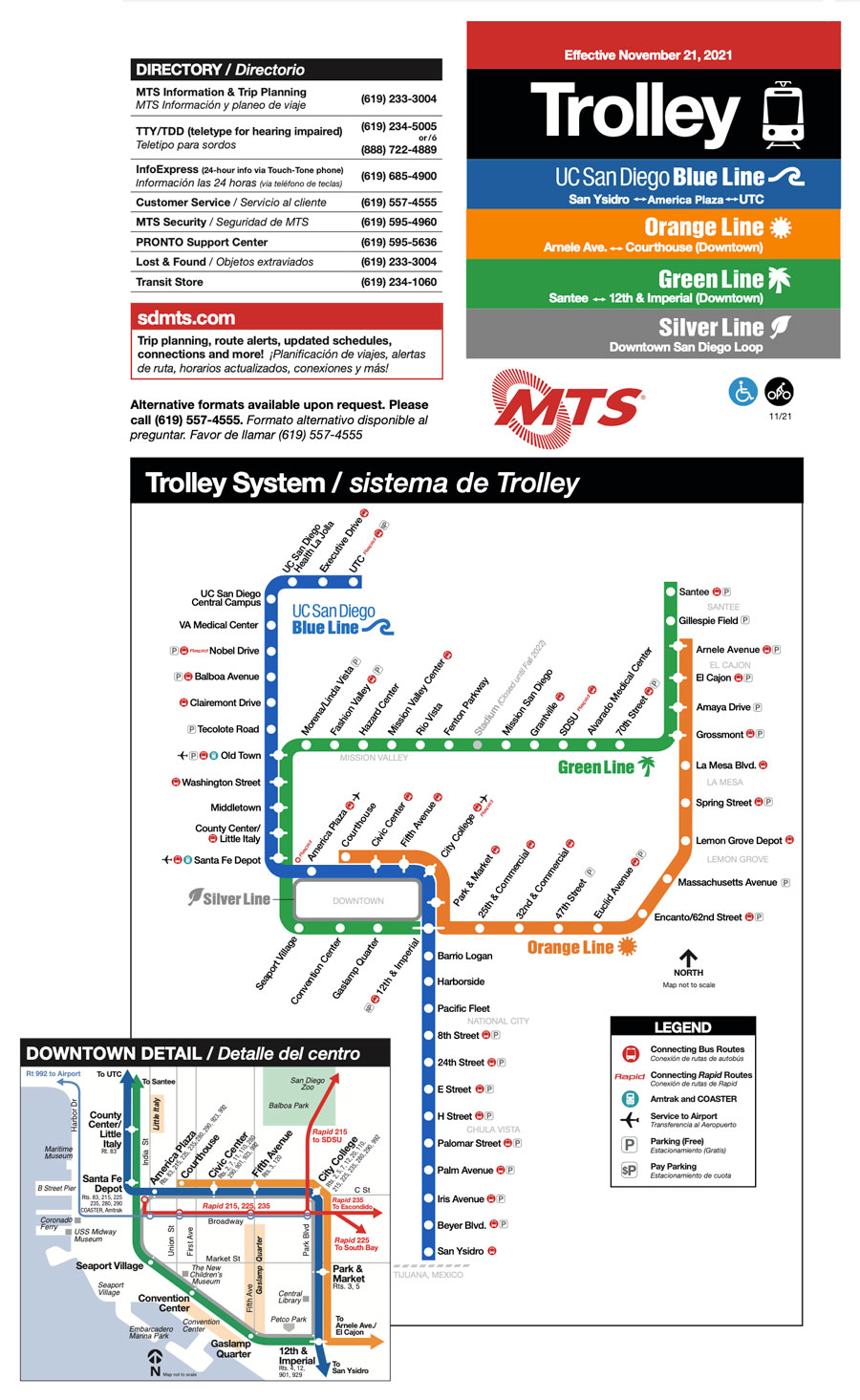
2021 timetable clipping / collection
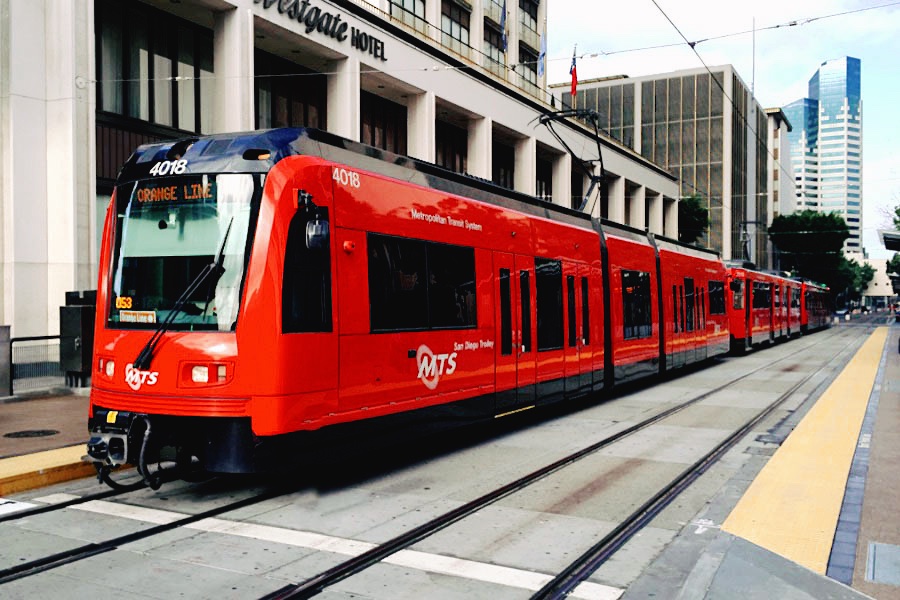
San Diego, Ca / Aug 2015 / RWH
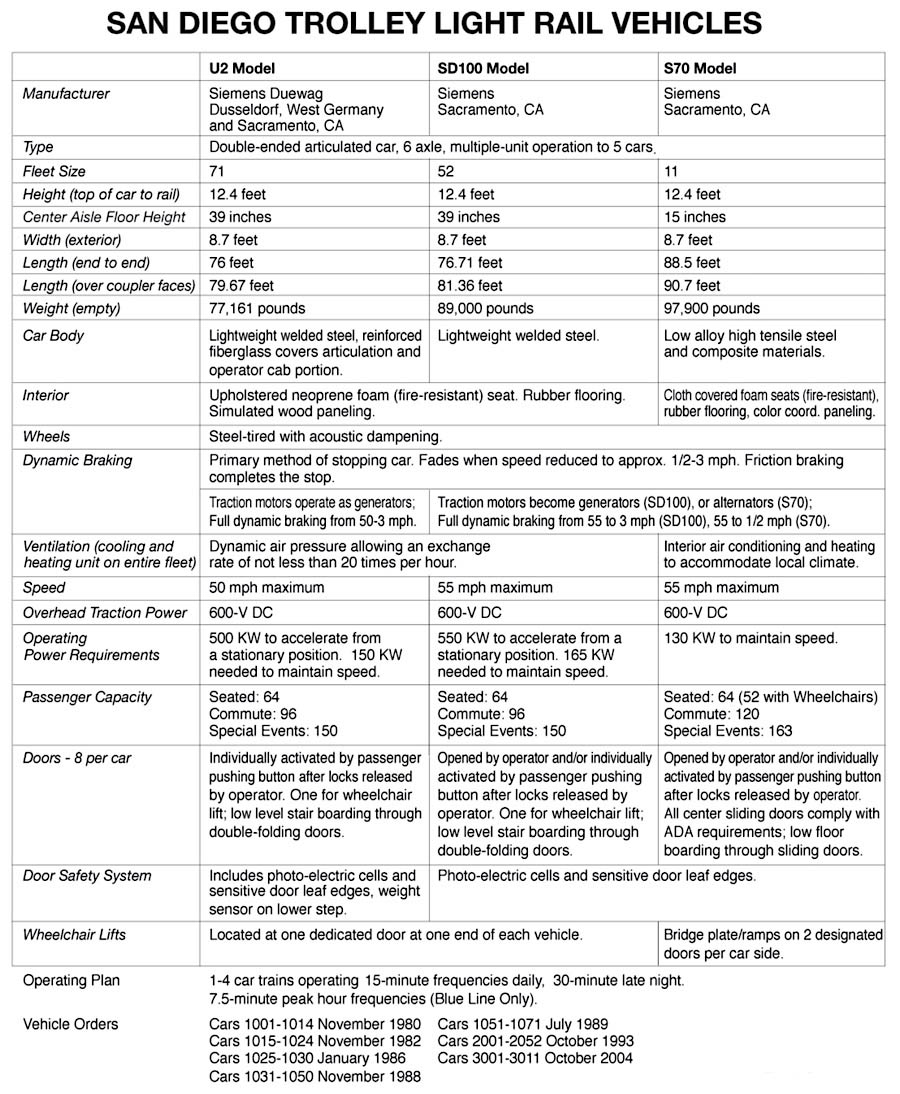
2007 vehicle data sheet / collection
U2 series
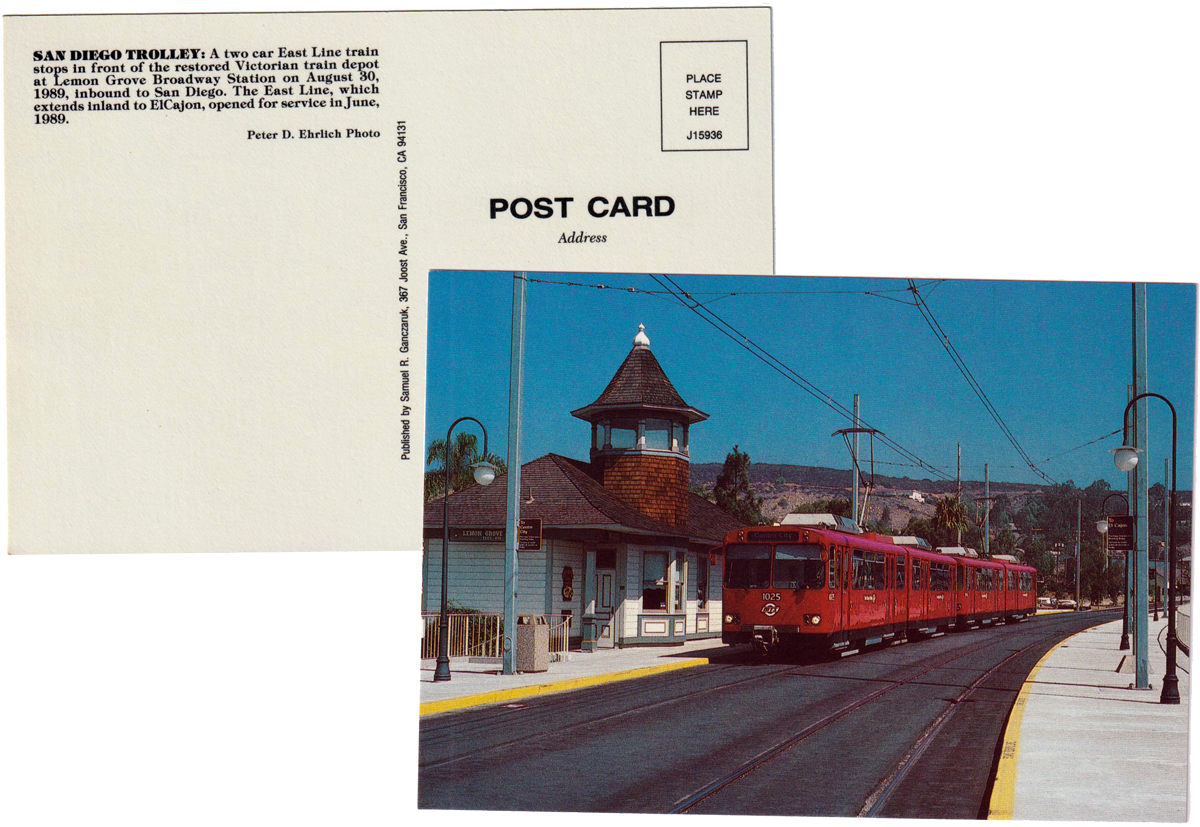
postcard / collection

collection
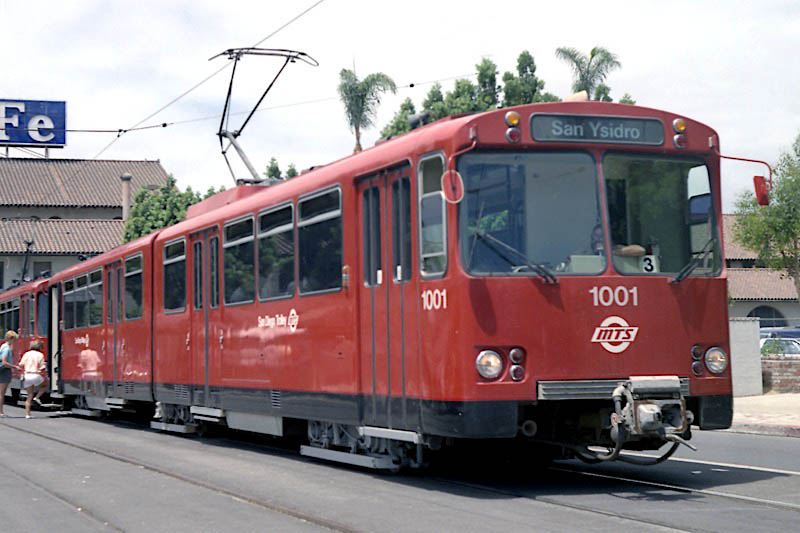
Metropolitan Transit System #1001
San Diego, Ca / Aug 1987 / JCH


Model U2 series

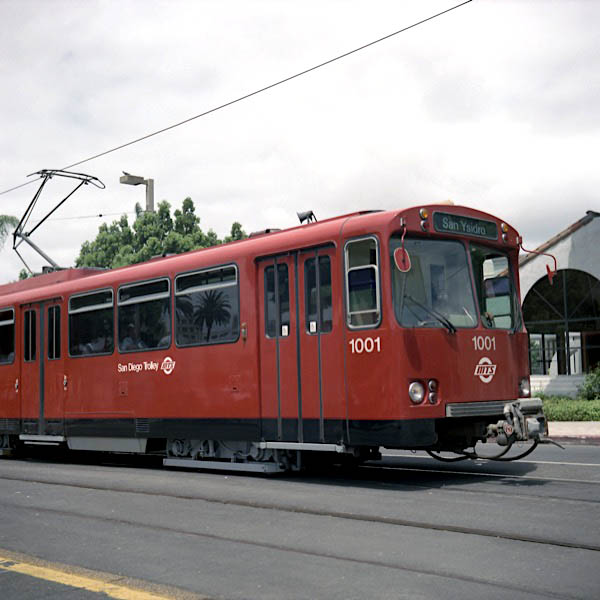
San Diego, Ca / Aug 1987 / JCH
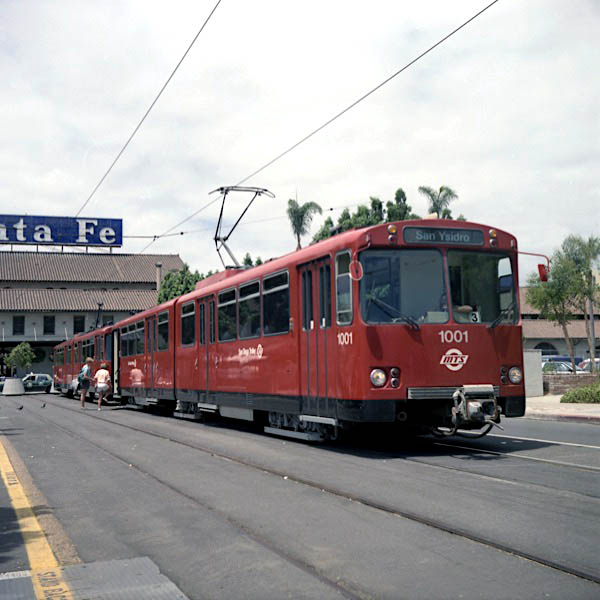
San Diego, Ca / Aug 1987 / JCH

San Diego, Ca / Aug 1987 / JCH
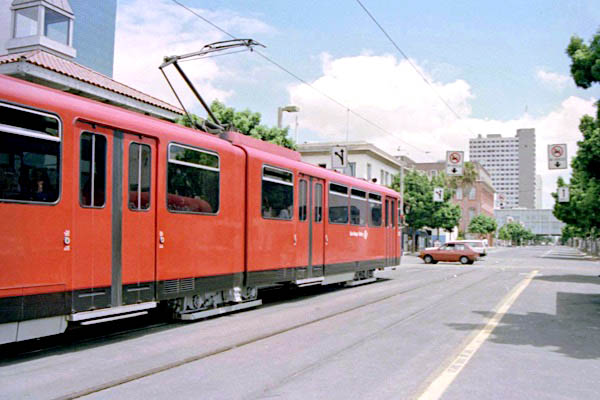
San Diego, Ca / Aug 1987 / RWH
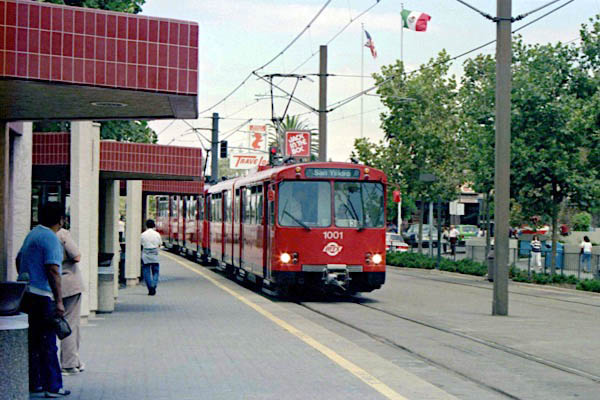
San Ysidro, Ca / Aug 1987 / RWH
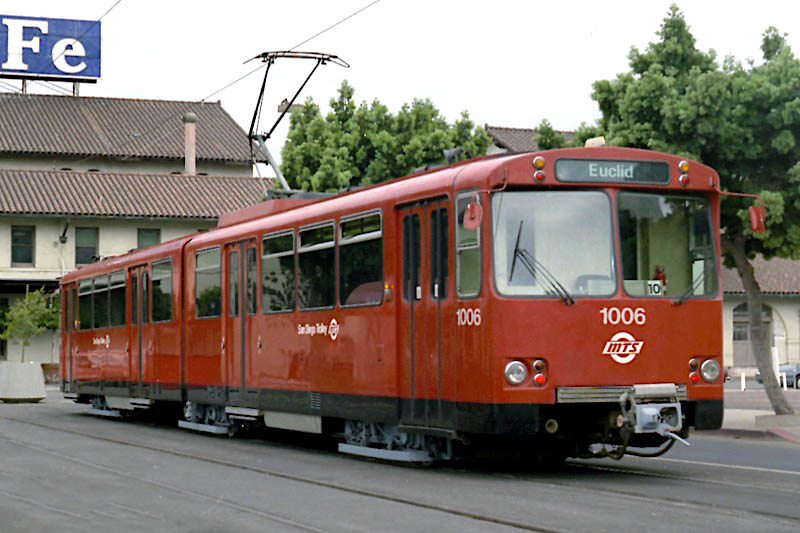
Metropolitan Transit System #1006
San Diego, Ca / Aug 1987 / JCH
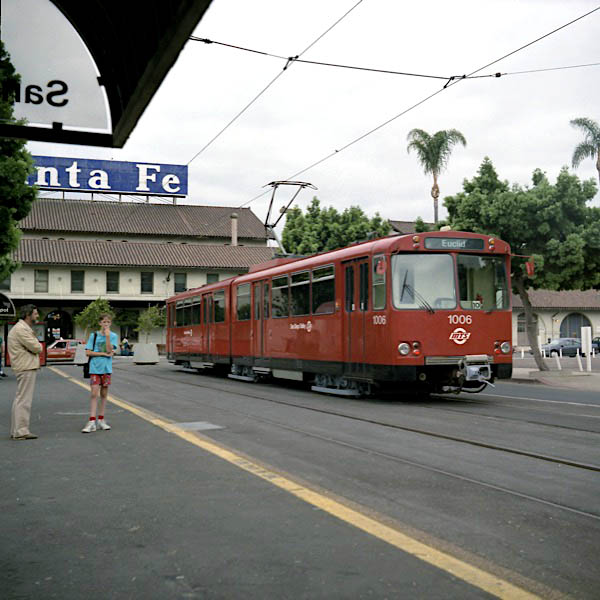
San Diego, Ca / Aug 1987 / JCH
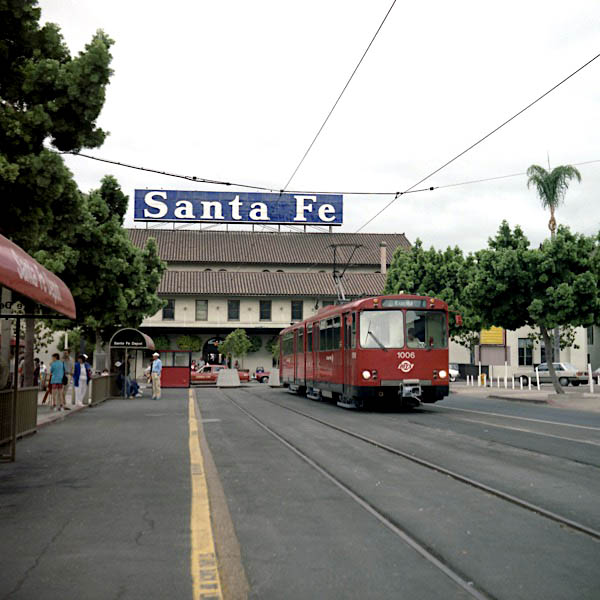
San Diego, Ca / Aug 1987 / JCH

San Diego, Ca / Aug 1987 / JCH
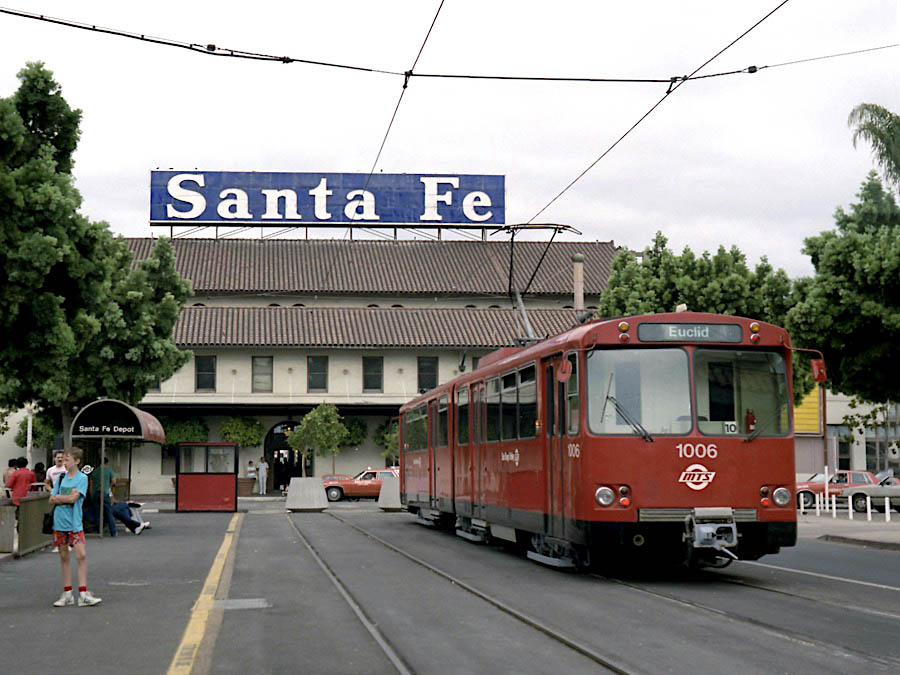
San Diego, Ca / Aug 1987 / JCH

 The San Diego U2 cars were the first modern light-rail equipment I ever rode as a boy, and they made quite an impression. I was schooled on street railways in my hometown of New Orleans, so the words "modern" and "streetcar" were to me strange bedfellows. Needless to say, I was impressed with the German-built units that sailed down the Blue Line at better than 40 miles per hour. At the time of our visit, the trainsets were only a few years old. Dad and I rode the Blue Line during a family vacation to southern California. We boarded downtown at the old Sante Fe depot and rode a shiny U2 set all the way south to the end of the line: the Mexican border. I remember that day well. Before we left our friend's house in San Diego, my mother kept warning me "not to eat any of the food across the border." It was my first time to leave the country, and in my anxiety I remember repeatedly asking my father how the border police would know I was a citizen upon our reentry — seeing as how I did not possess a driver's license or the like. Of course, I was about as Anglo-looking as they came; the patrol people at the gate didn't even notice me on the way back in. Relief! We rode another MTS set northbound to the city center, and later in the week at the Santa Fe Depot we hopped one of Amtrak's San Diegans for our return trip to Los Angeles.
The San Diego U2 cars were the first modern light-rail equipment I ever rode as a boy, and they made quite an impression. I was schooled on street railways in my hometown of New Orleans, so the words "modern" and "streetcar" were to me strange bedfellows. Needless to say, I was impressed with the German-built units that sailed down the Blue Line at better than 40 miles per hour. At the time of our visit, the trainsets were only a few years old. Dad and I rode the Blue Line during a family vacation to southern California. We boarded downtown at the old Sante Fe depot and rode a shiny U2 set all the way south to the end of the line: the Mexican border. I remember that day well. Before we left our friend's house in San Diego, my mother kept warning me "not to eat any of the food across the border." It was my first time to leave the country, and in my anxiety I remember repeatedly asking my father how the border police would know I was a citizen upon our reentry — seeing as how I did not possess a driver's license or the like. Of course, I was about as Anglo-looking as they came; the patrol people at the gate didn't even notice me on the way back in. Relief! We rode another MTS set northbound to the city center, and later in the week at the Santa Fe Depot we hopped one of Amtrak's San Diegans for our return trip to Los Angeles.
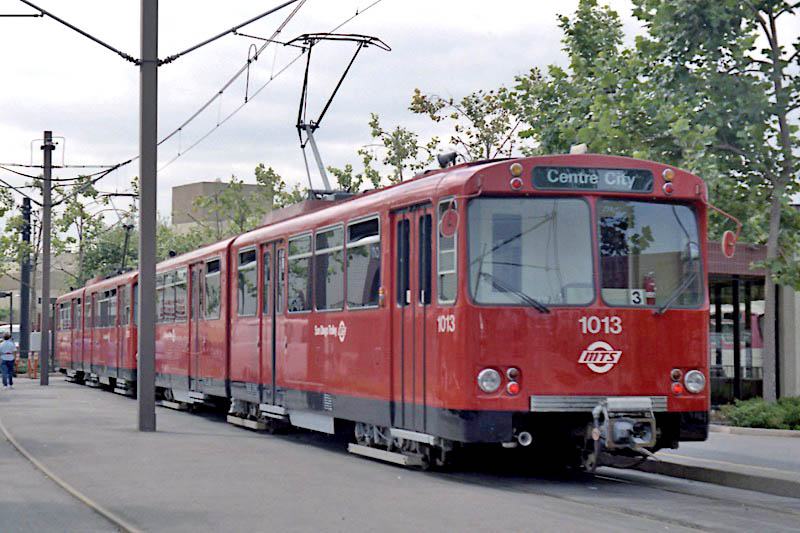
Metropolitan Transit System #1013
San Ysidro, Ca / Aug 1987 / JCH
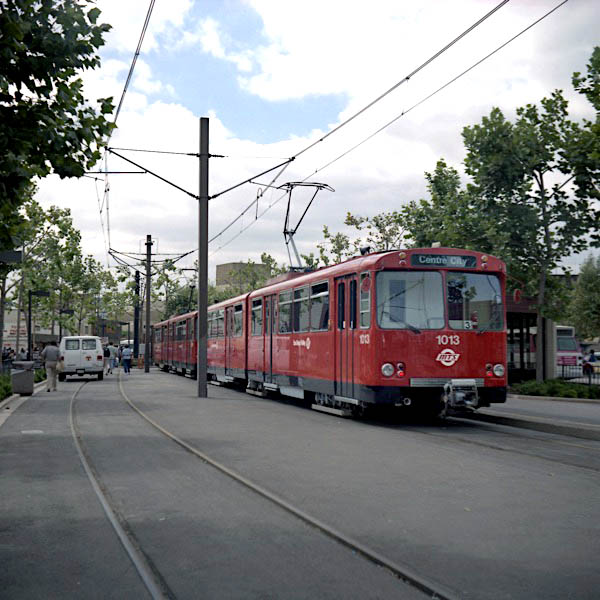
San Ysidro, Ca / Aug 1987 / JCH
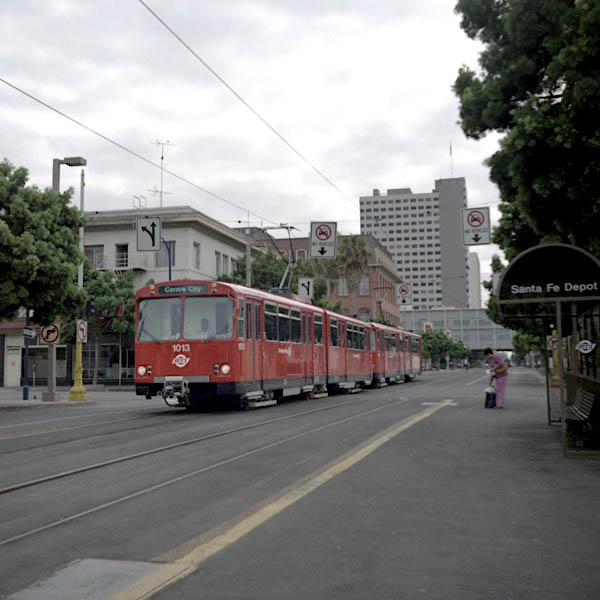
San Diego, Ca / Aug 1987 / JCH
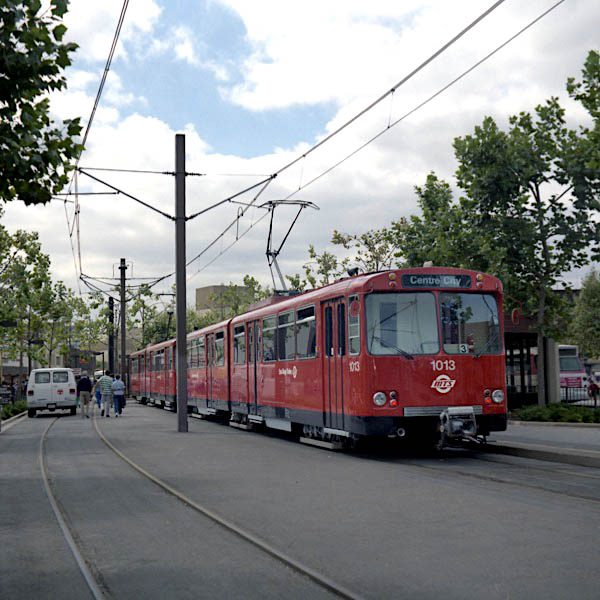
San Ysidro, Ca / Aug 1987 / JCH
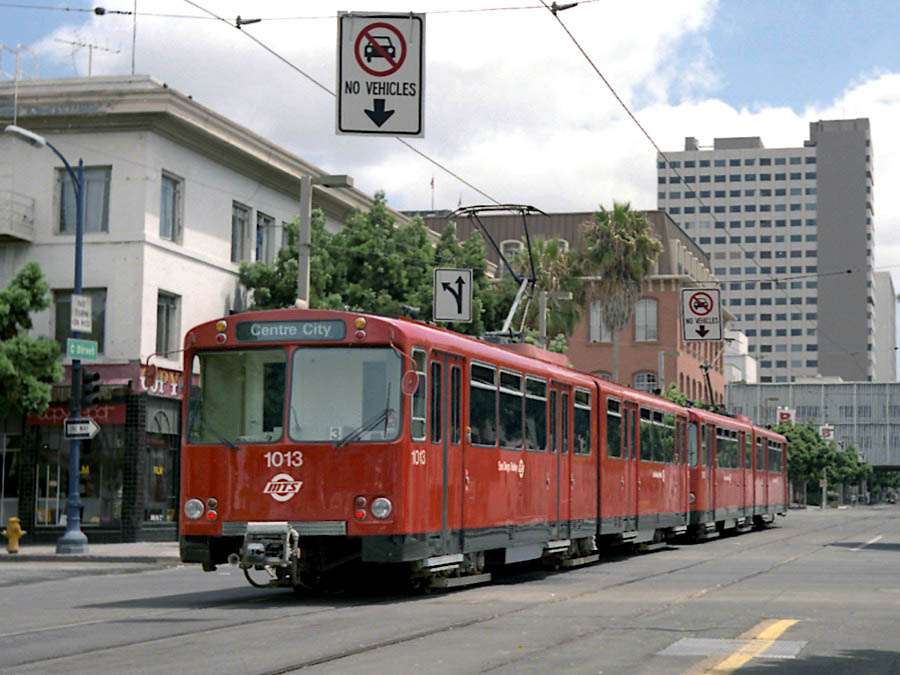
San Diego, Ca / Aug 1987 / JCH
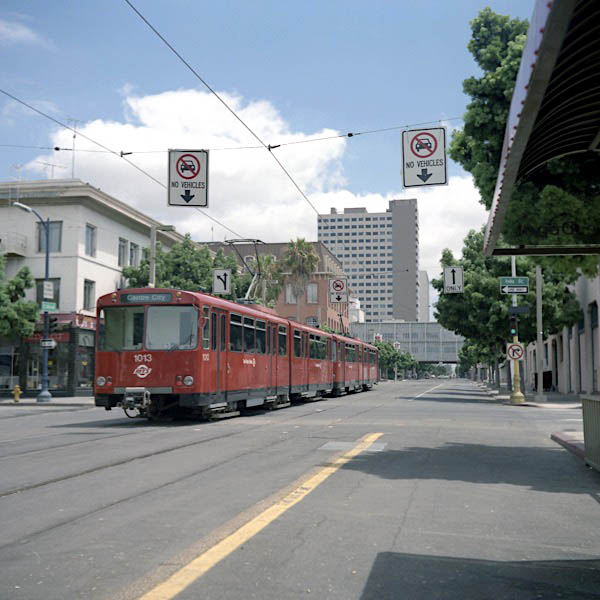
San Diego, Ca / Aug 1987 / JCH
SD100 series
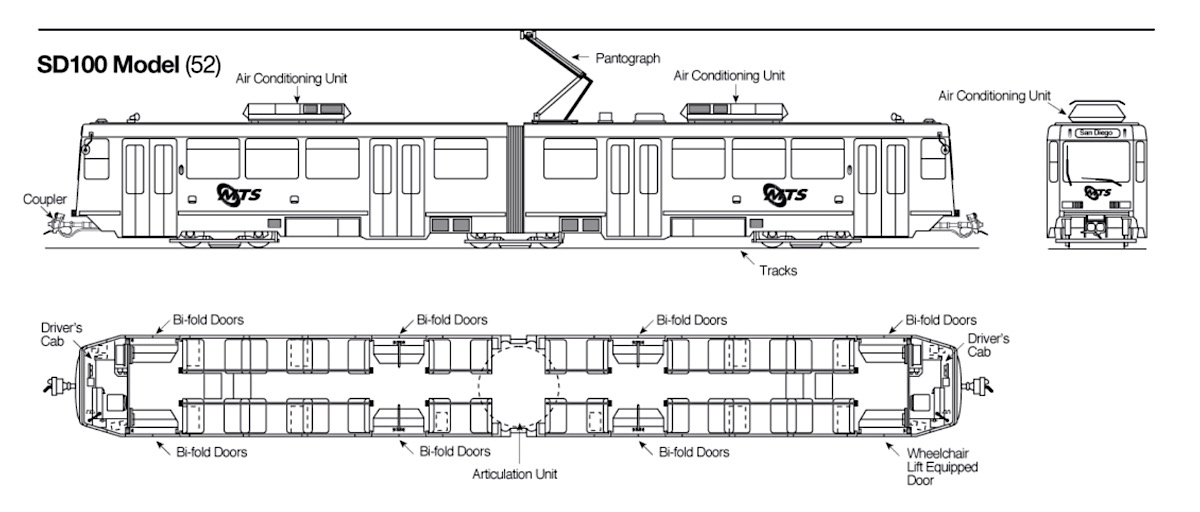
collection
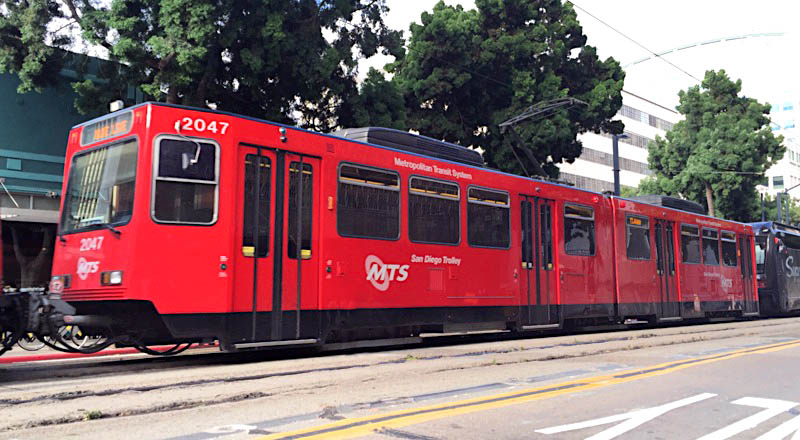
Metropolitan Transit System #2047
San Diego, Ca / Aug 2015 / RWH


Model SD100 series


San Diego, Ca / Aug 2015 / RWH
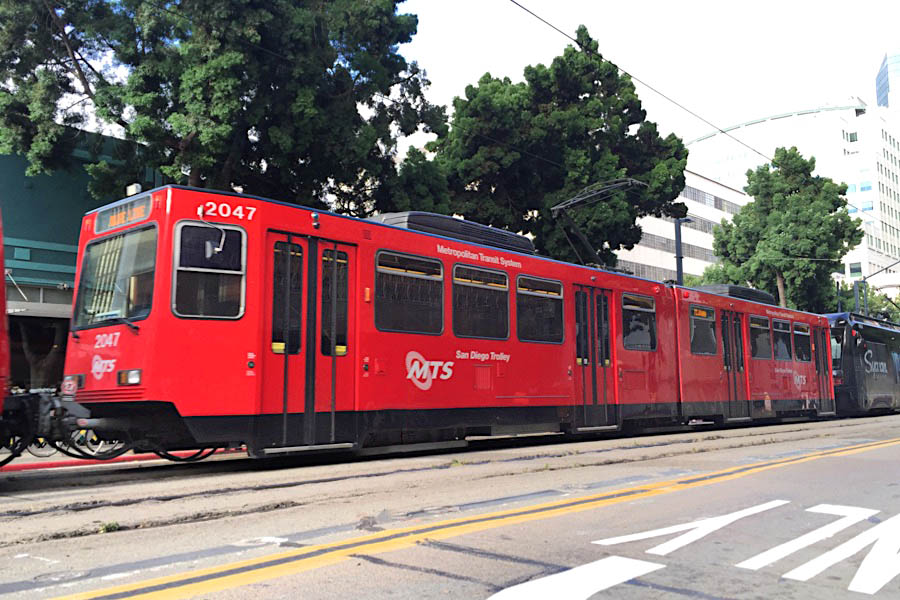
San Diego, Ca / Aug 2015 / RWH

Metropolitan Transit System #2003
San Diego, Ca / Oct 2017 / RWH

San Diego, Ca / Oct 2017 / RWH
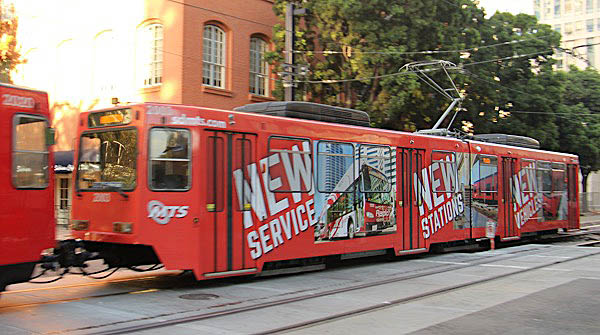
San Diego, Ca / Oct 2017 / RWH
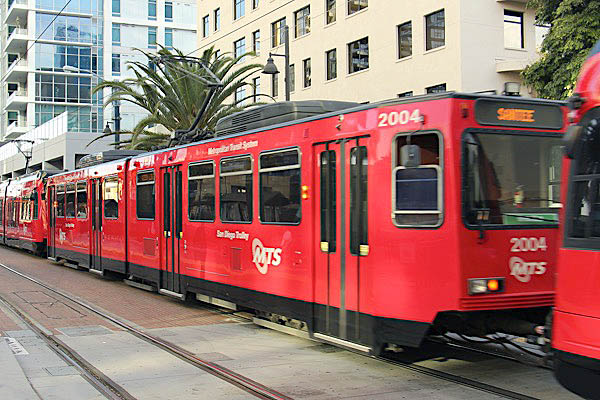
Metropolitan Transit System #2004
San Diego, Ca / Oct 2017 / RWH
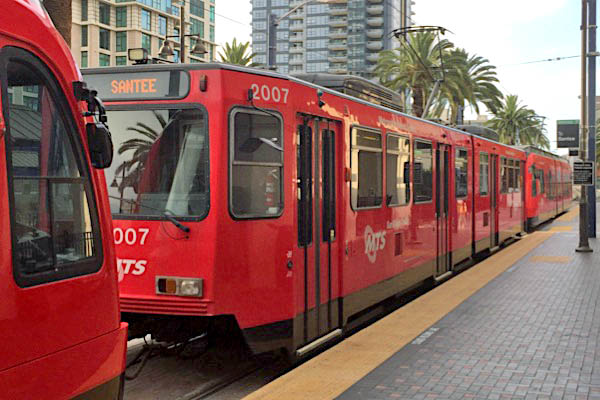
Metropolitan Transit System #2007
San Diego, Ca / Aug 2015 / RWH
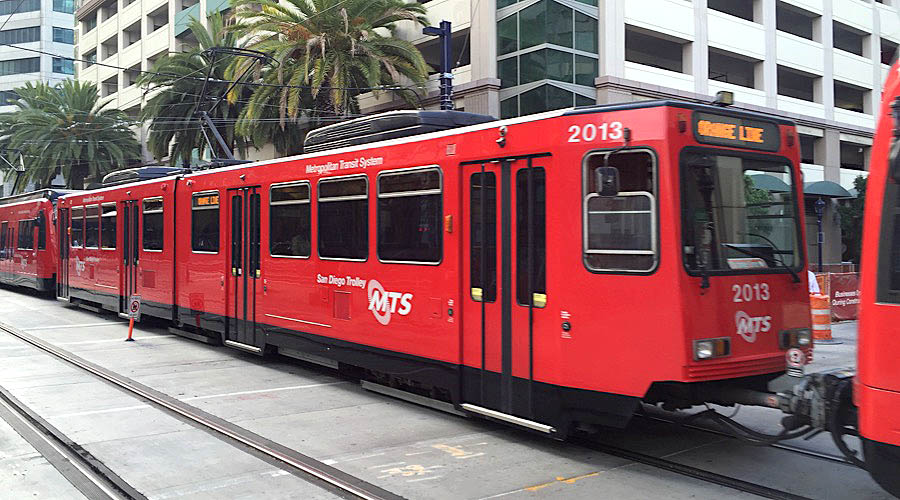
Metropolitan Transit System #2013
San Diego, Ca / Aug 2015 / RWH
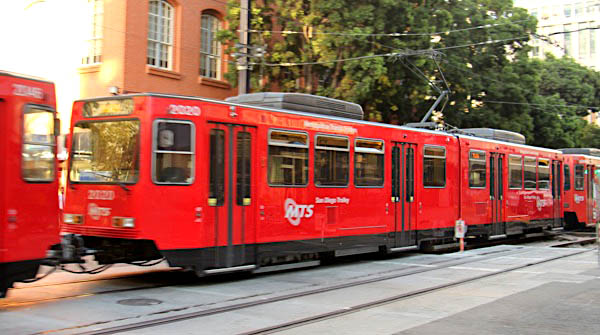
Metropolitan Transit System #2020
San Diego, Ca / Oct 2017 / RWH
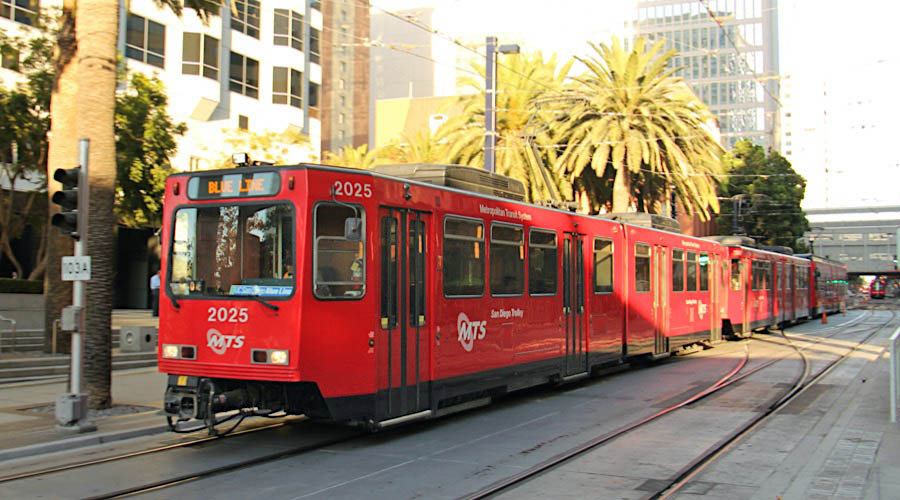
Metropolitan Transit System #2025
San Diego, Ca / Oct 2017 / RWH
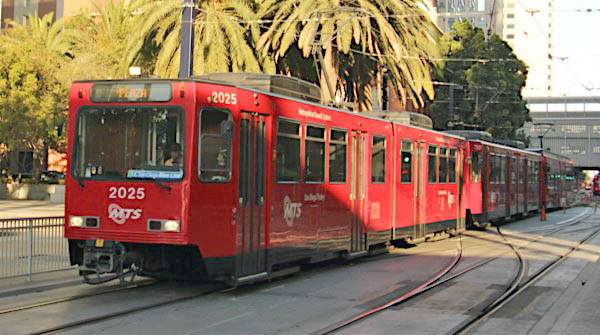
San Diego, Ca / Oct 2017 / RWH
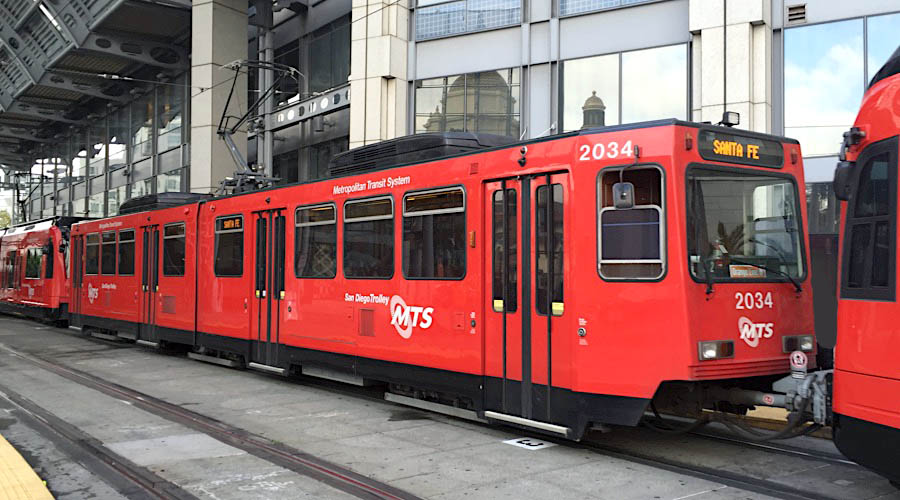
Metropolitan Transit System #2034
San Diego, Ca / Aug 2015 / RWH
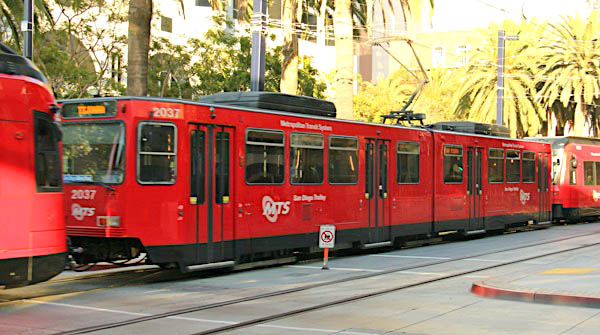
Metropolitan Transit System #2037
San Diego, Ca / Oct 2017 / RWH

Metropolitan Transit System #2038
San Diego, Ca / Oct 2017 / RWH
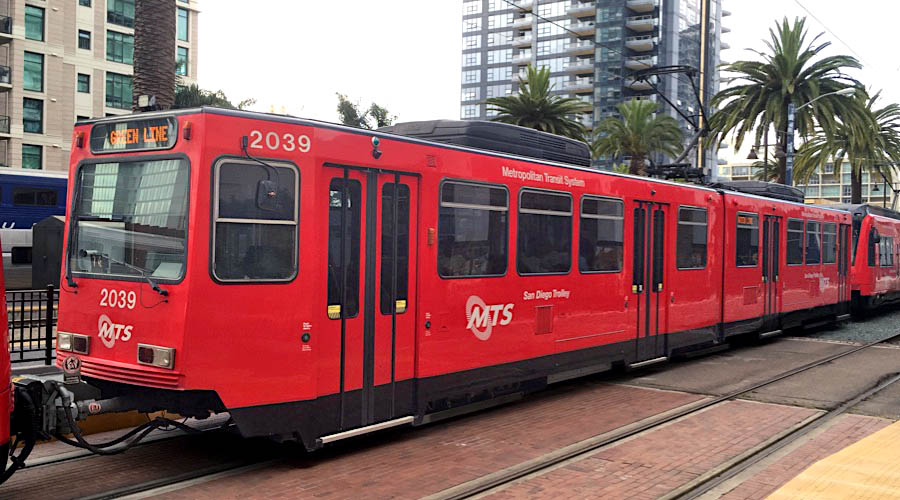
Metropolitan Transit System #2039
San Diego, Ca / Aug 2015 / RWH
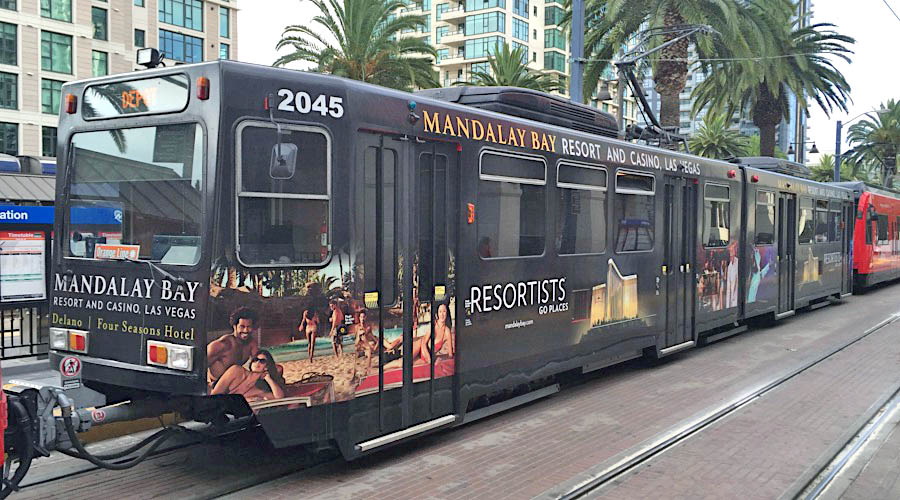
Metropolitan Transit System #2045
San Diego, Ca / Aug 2015 / RWH
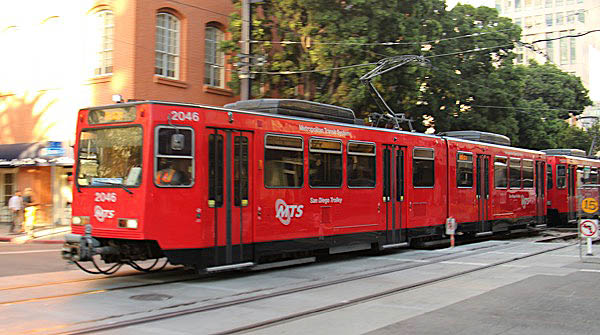
Metropolitan Transit System #2046
San Diego, Ca / Oct 2017 / RWH
S70 series

collection
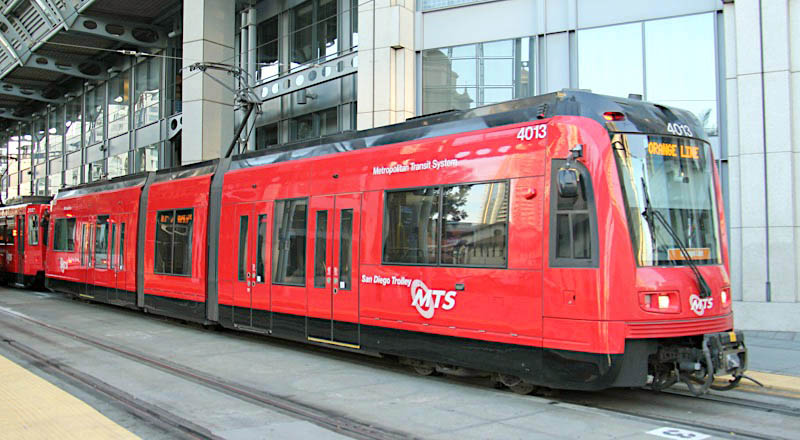
Metropolitan Transit System #4013
San Diego, Ca / Oct 2017 / RWH


Model S70 series

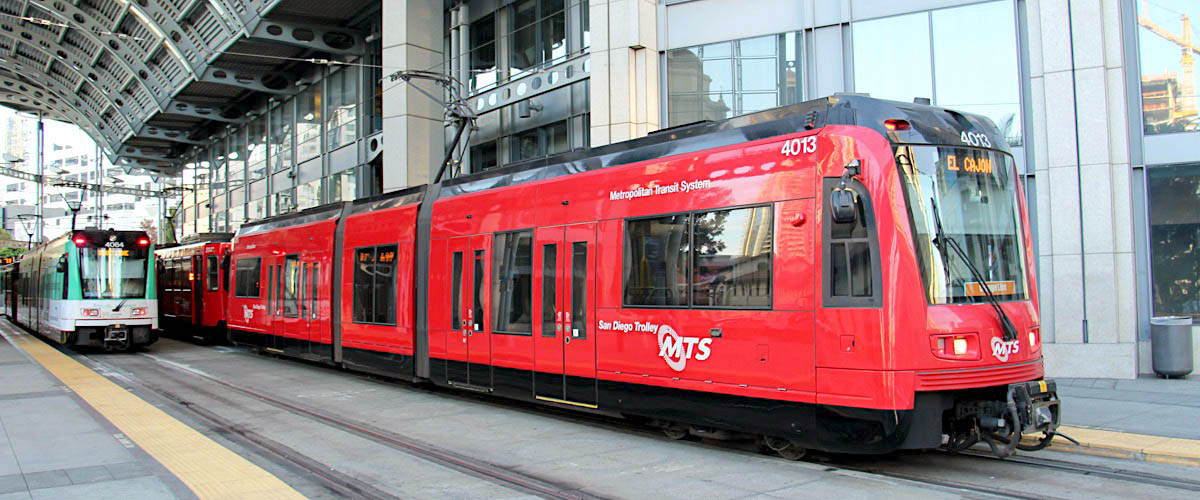
San Diego, Ca / Oct 2017 / RWH
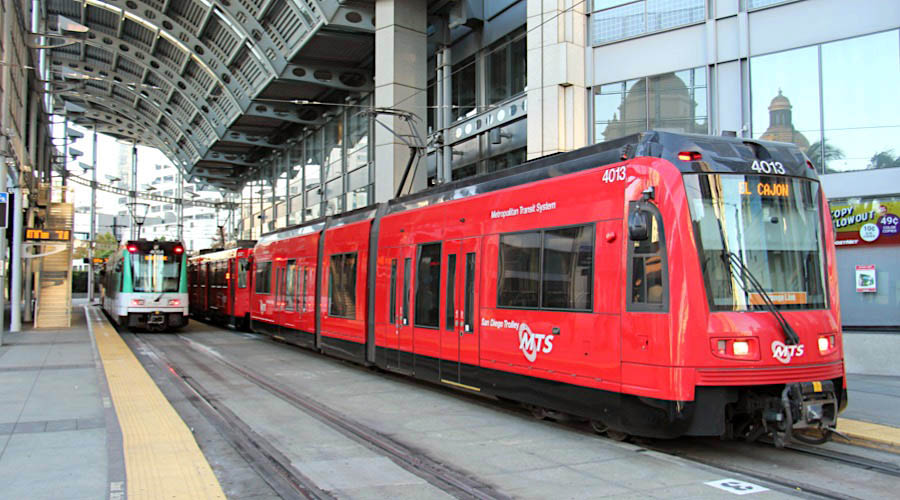
San Diego, Ca / Oct 2017 / RWH
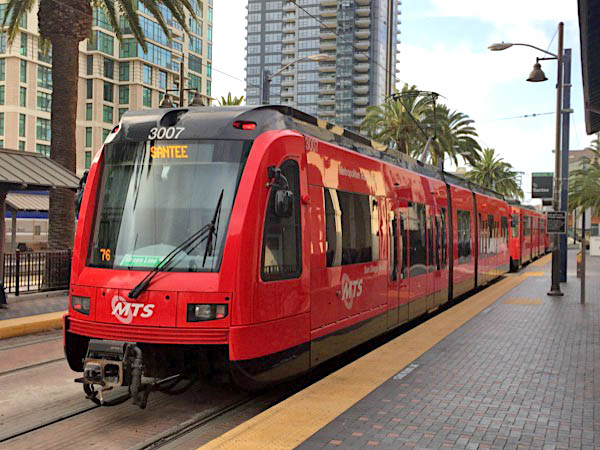
Metropolitan Transit System #3007
San Diego, Ca / Aug 2015 / RWH
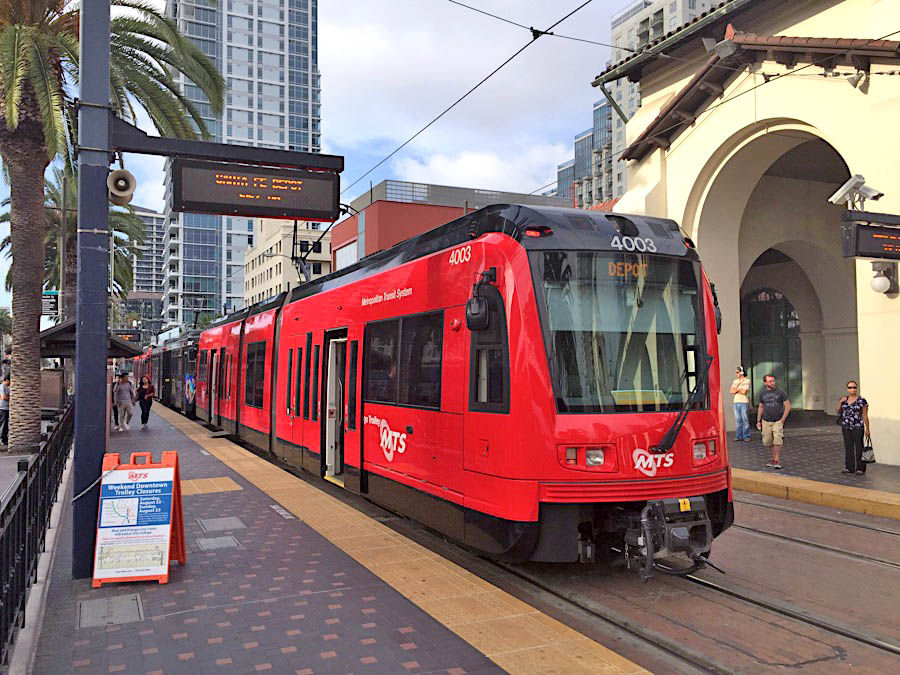
Metropolitan Transit System #4003
San Diego, Ca / Aug 2015 / RWH
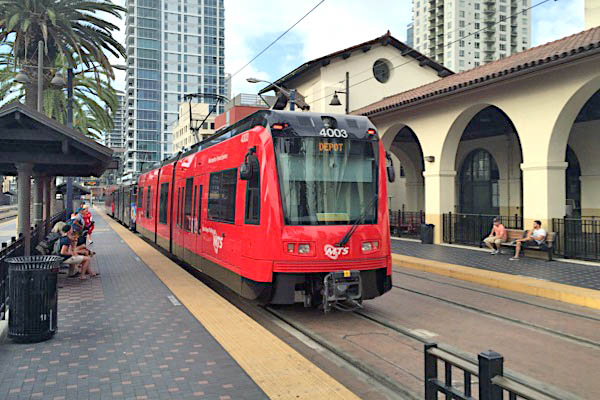
San Diego, Ca / Aug 2015 / RWH
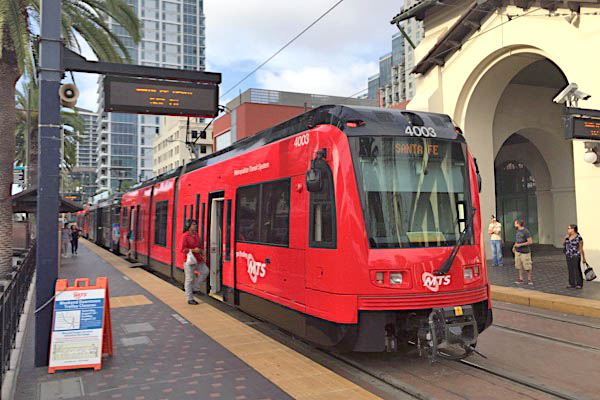
San Diego, Ca / Aug 2015 / RWH
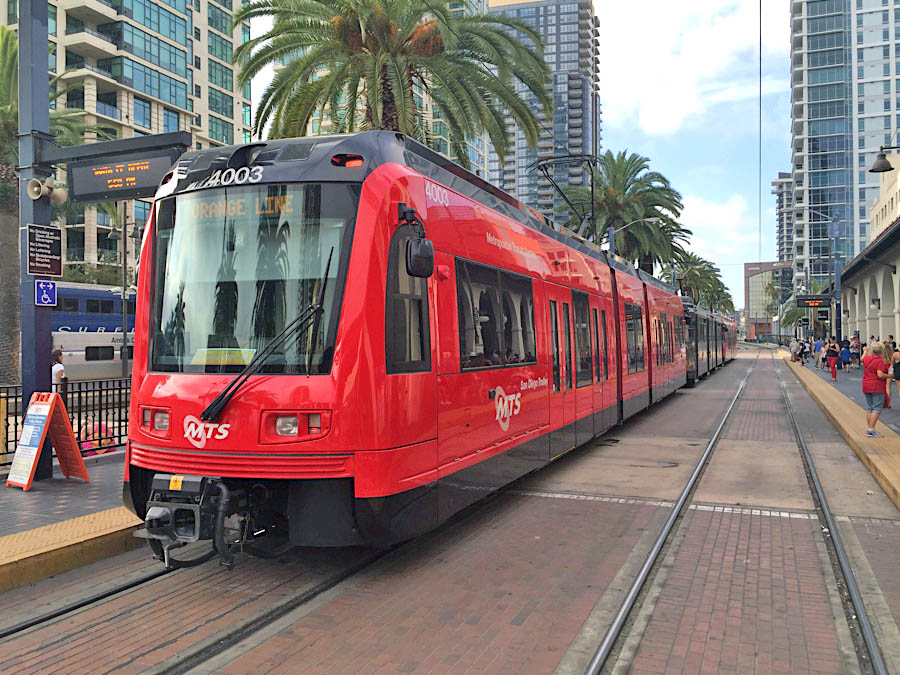
San Diego, Ca / Aug 2015 / RWH

Metropolitan Transit System #4005
San Diego, Ca / Aug 2015 / RWH
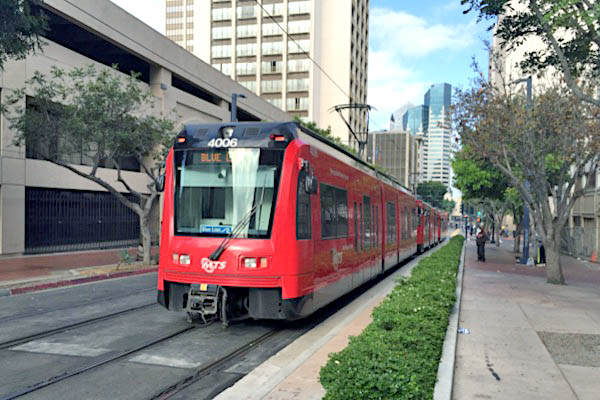
Metropolitan Transit System #4006
San Diego, Ca / Aug 2015 / RWH
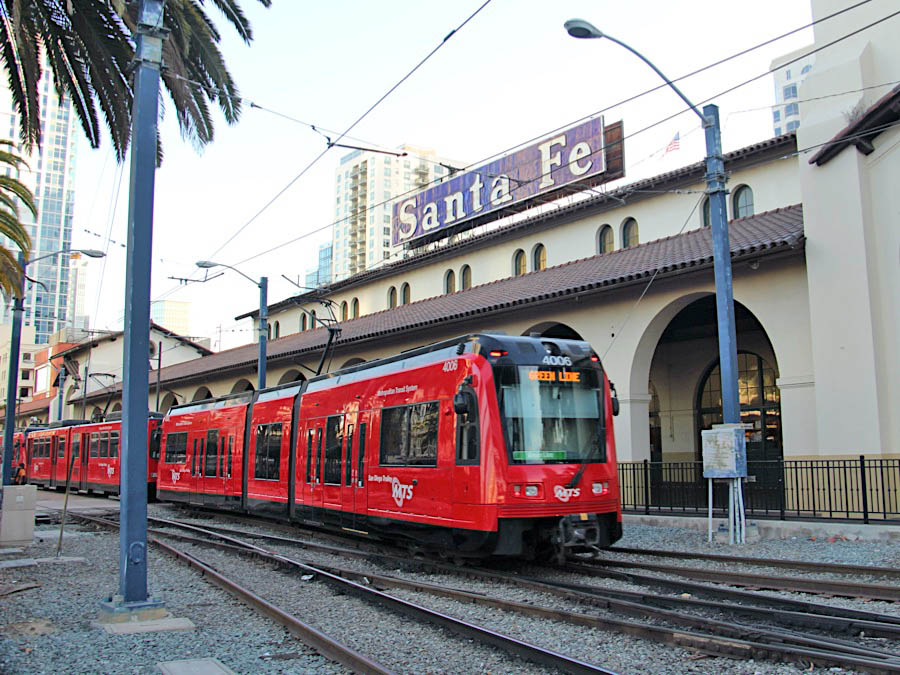
San Diego, Ca / Aug 2015 / RWH
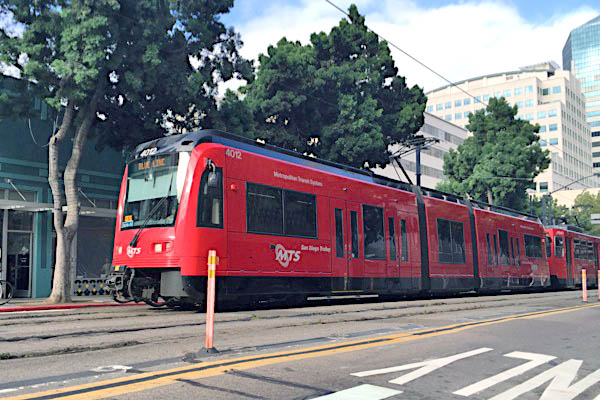
Metropolitan Transit System #4012
San Diego, Ca / Aug 2015 / RWH
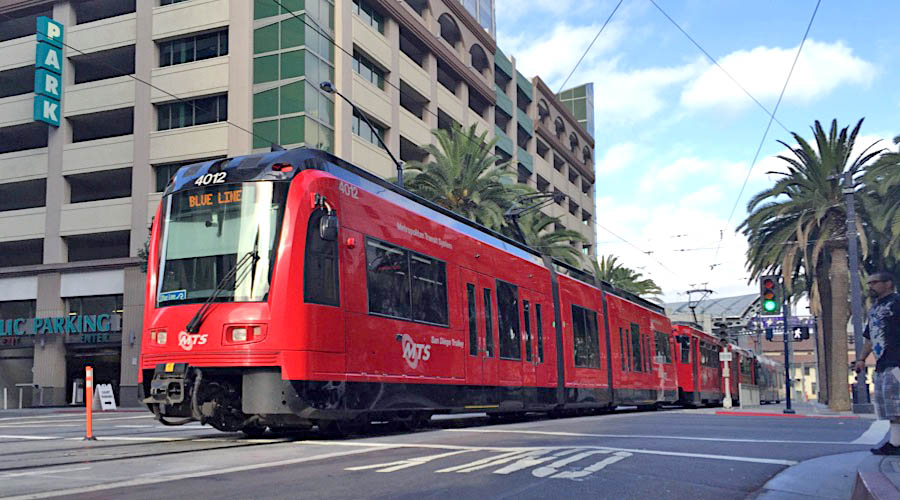
San Diego, Ca / Aug 2015 / RWH
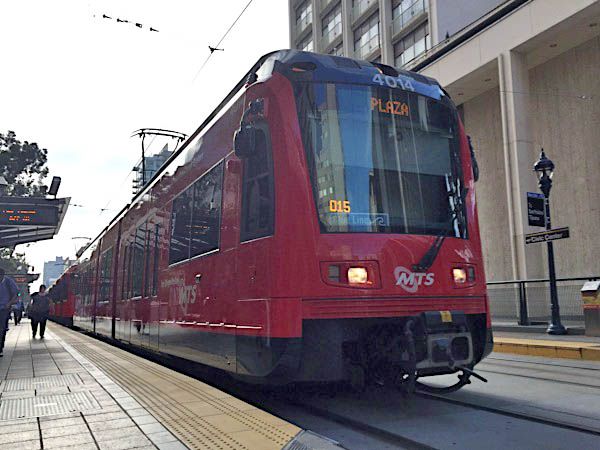
Metropolitan Transit System #4014
San Diego, Ca / Aug 2015 / RWH
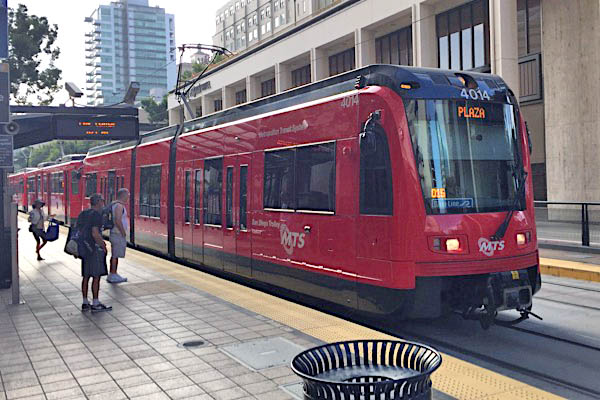
San Diego, Ca / Aug 2015 / RWH
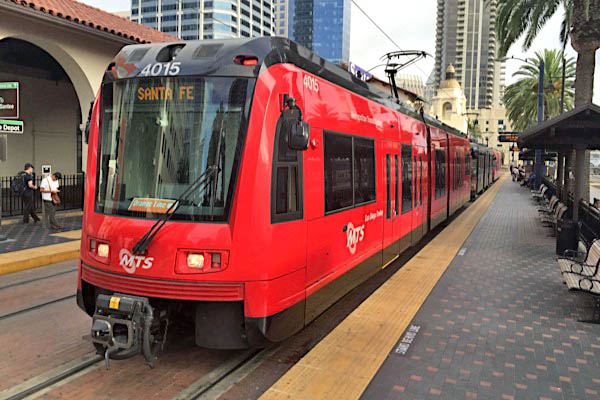
Metropolitan Transit System #4015
San Diego, Ca / Aug 2015 / RWH

San Diego, Ca / Aug 2015 / RWH
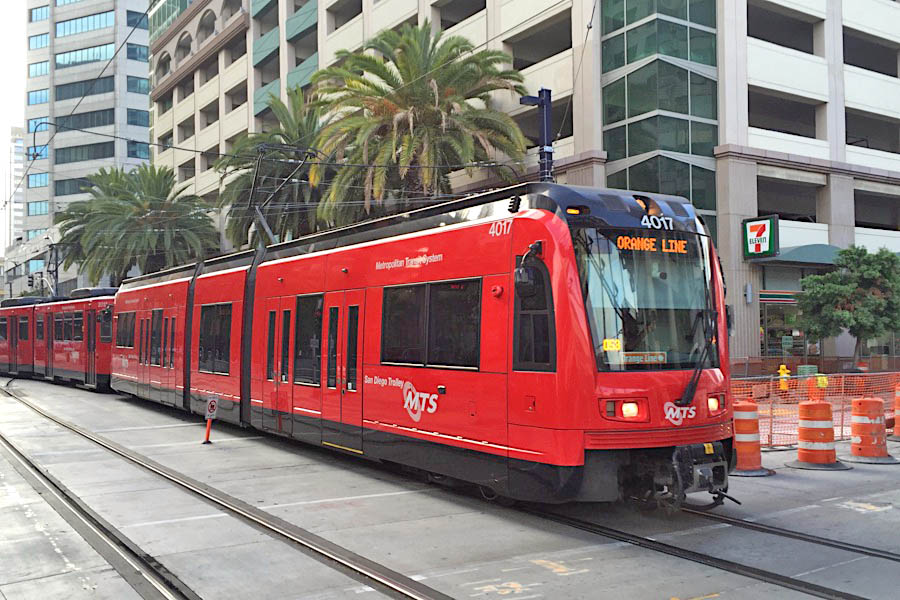
Metropolitan Transit System #4017
San Diego, Ca / Aug 2015 / RWH

San Diego, Ca / Aug 2015 / RWH

San Diego, Ca / Aug 2015 / RWH
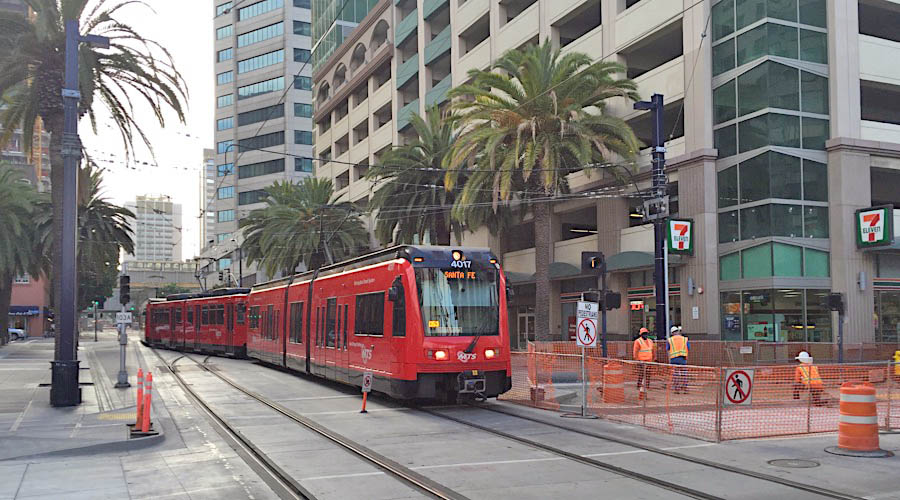
San Diego, Ca / Aug 2015 / RWH
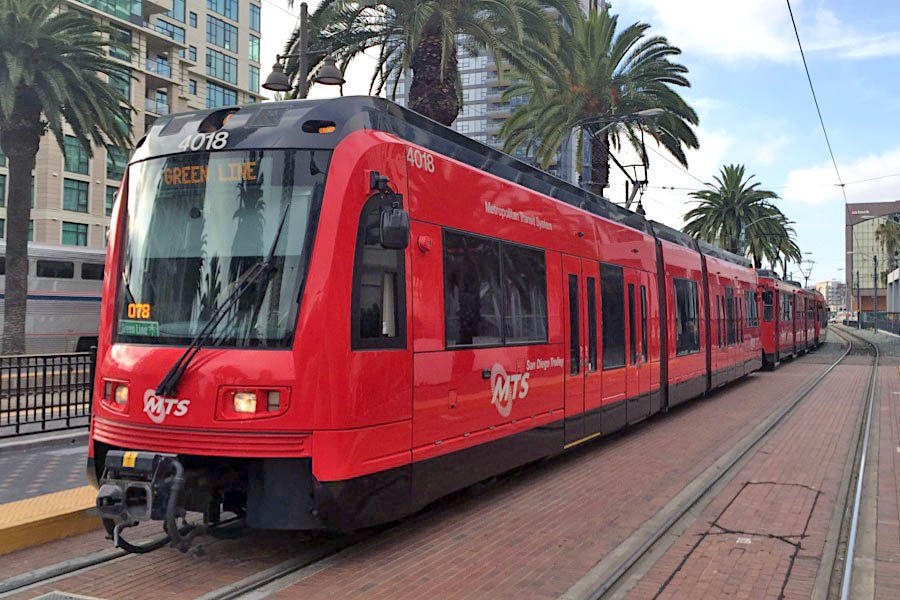
Metropolitan Transit System #4018
San Diego, Ca / Aug 2015 / RWH
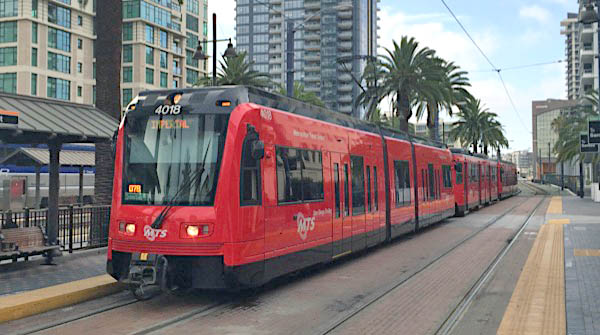
San Diego, Ca / Aug 2015 / RWH
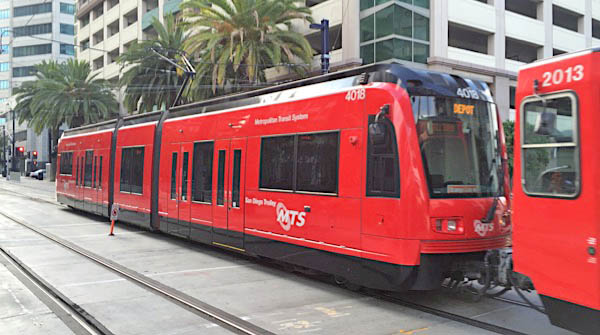
San Diego, Ca / Aug 2015 / RWH

San Diego, Ca / Aug 2015 / RWH
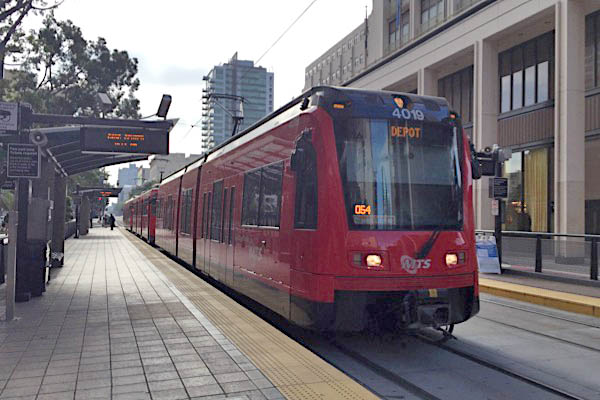
Metropolitan Transit System #4019
San Diego, Ca / Aug 2015 / RWH

Metropolitan Transit System #4020
San Diego, Ca / Aug 2015 / RWH
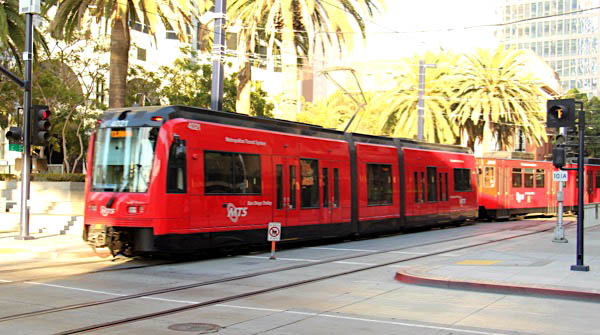
Metropolitan Transit System #4021
San Diego, Ca / Oct 2017 / RWH
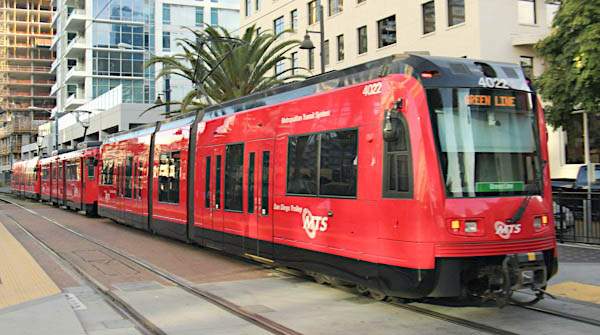
Metropolitan Transit System #4022
San Diego, Ca / Oct 2017 / RWH
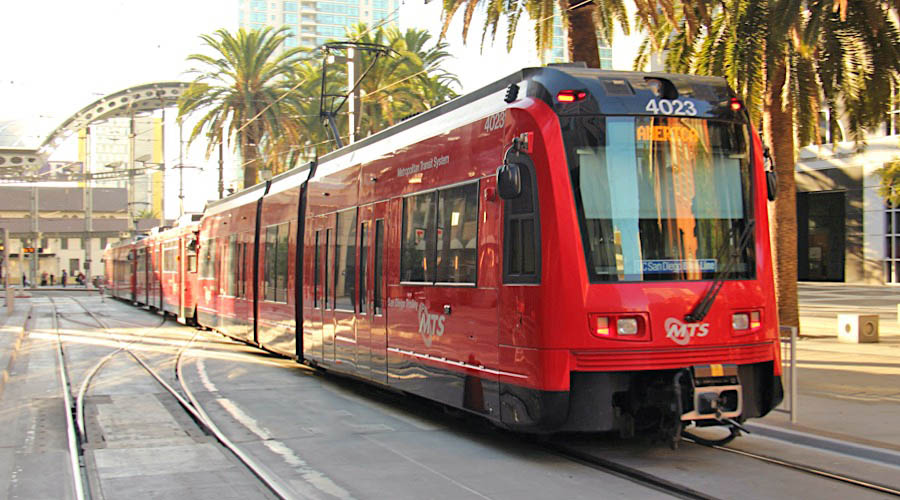
Metropolitan Transit System #4023
San Diego, Ca / Oct 2017 / RWH
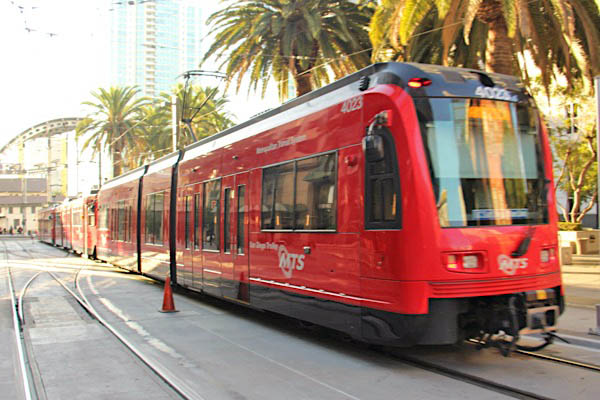
San Diego, Ca / Oct 2017 / RWH
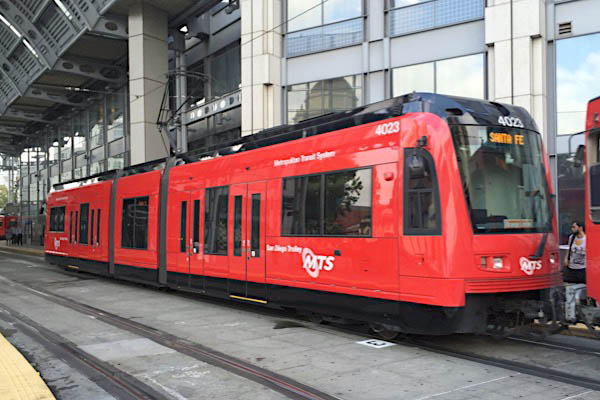
San Diego, Ca / Oct 2017 / RWH
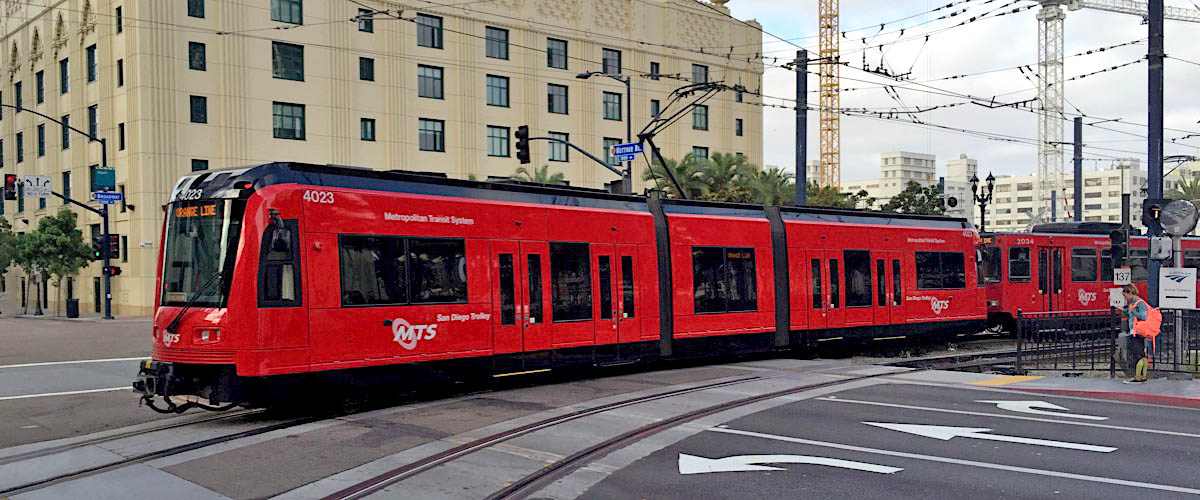
San Diego, Ca / Oct 2017 / RWH
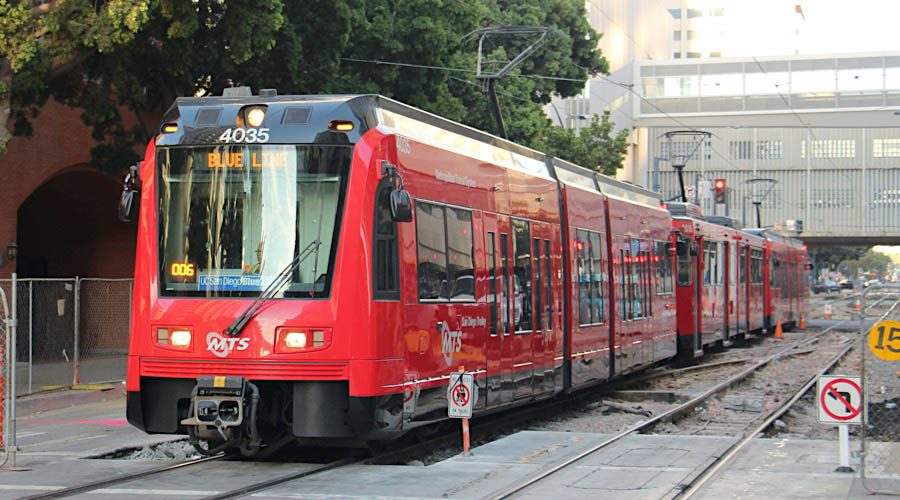
Metropolitan Transit System #4035
San Diego, Ca / Oct 2017 / RWH
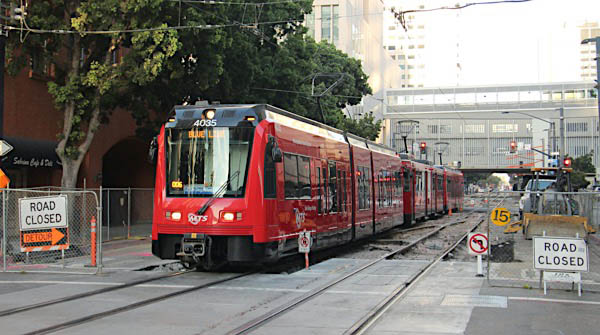
San Diego, Ca / Oct 2017 / RWH

San Diego, Ca / Oct 2017 / RWH
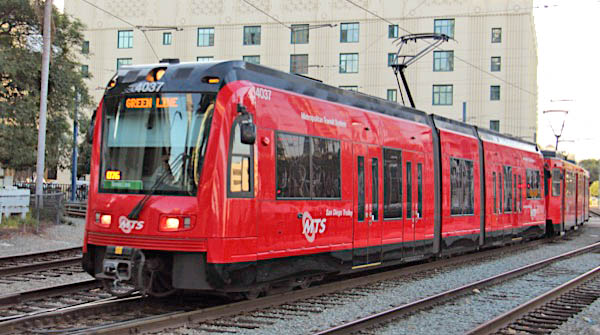
Metropolitan Transit System #4037
San Diego, Ca / Oct 2017 / RWH

Metropolitan Transit System #4049
San Diego, Ca / Aug 2015 / RWH

Metropolitan Transit System #4053
San Diego, Ca / Aug 2015 / RWH
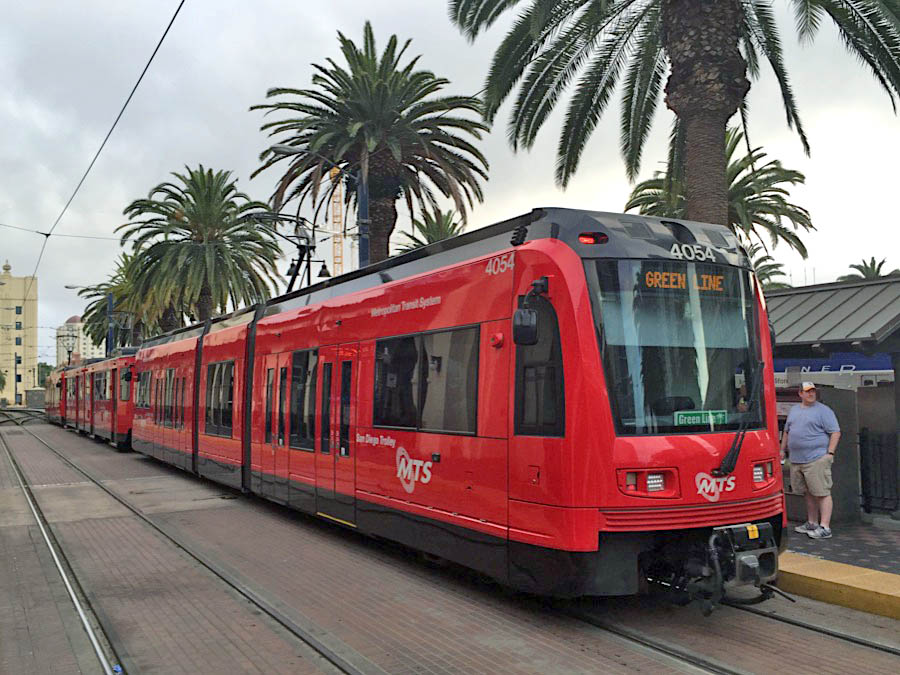
Metropolitan Transit System #4054
San Diego, Ca / Aug 2015 / RWH

San Diego, Ca / Aug 2015 / RWH
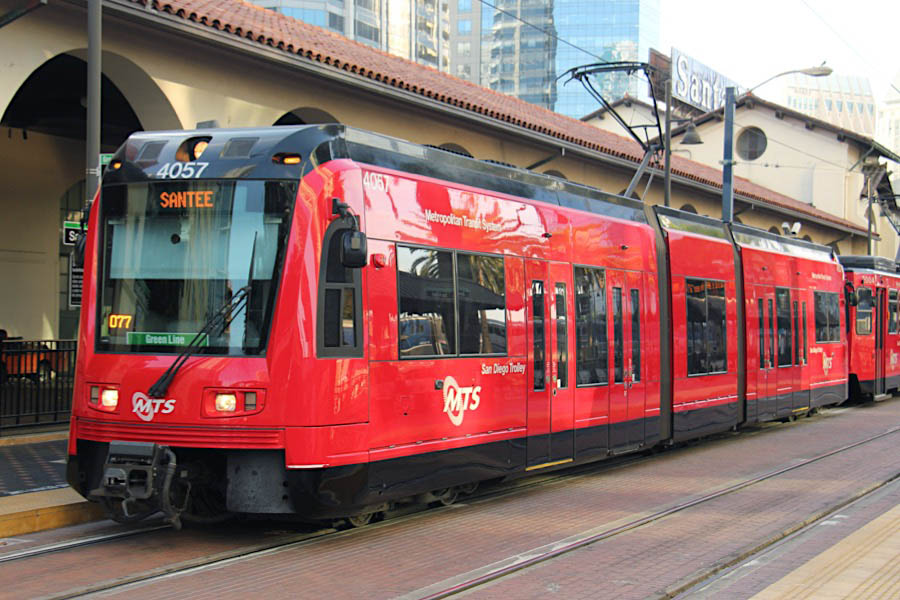
Metropolitan Transit System #4057
San Diego, Ca / Oct 2017 / RWH
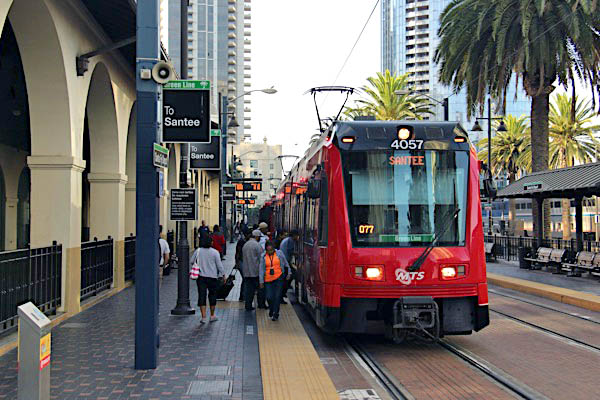
San Diego, Ca / Oct 2017 / RWH
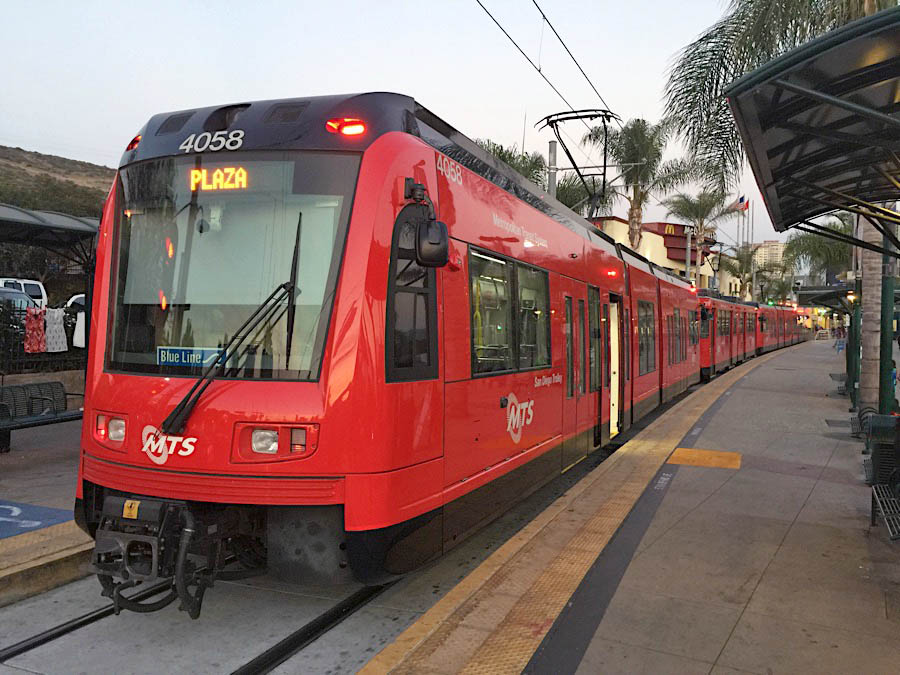
Metropolitan Transit System #4058
San Diego, Ca / Aug 2015 / RWH
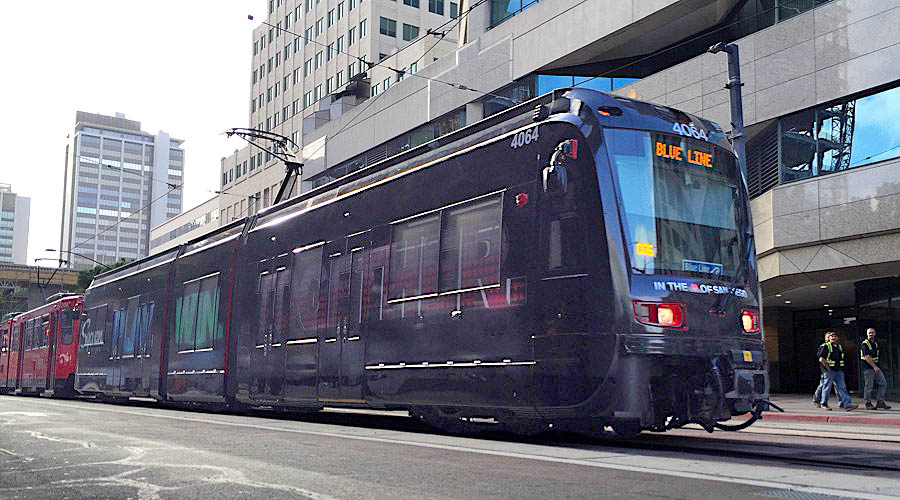
Metropolitan Transit System #4064
San Diego, Ca / Aug 2015 / RWH
Locations
 Santa Fe Depot
Santa Fe Depot

San Diego, Ca / Aug 1987 / RWH
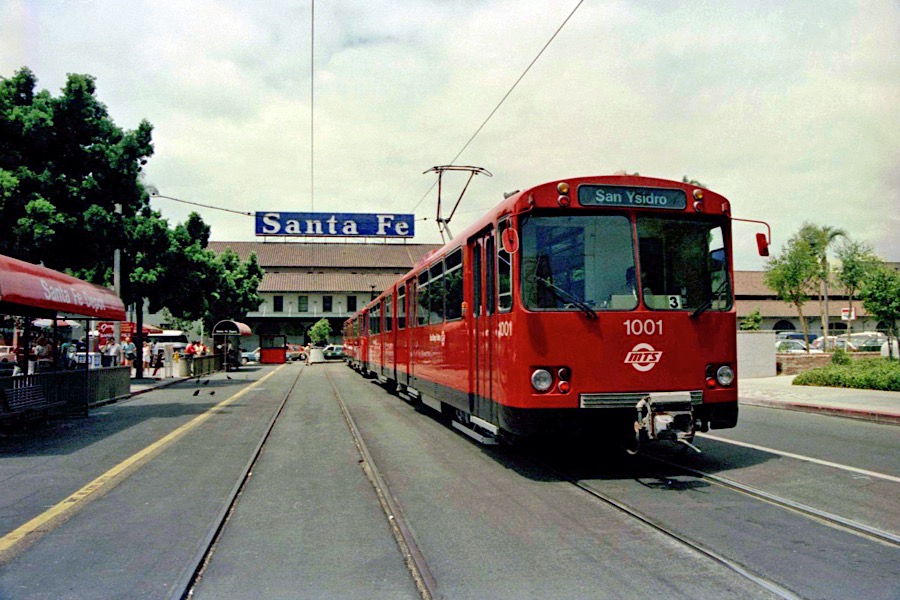
San Diego, Ca / Aug 1987 / RWH

Click to see the Santa Fe Depot area plotted on a Google Maps page

 Union Station, also known as the “Santa Fe Depot,” has served residents and visitors to San Diego for more than a century. Located in the heart of downtown near the cruise ship piers and other bayside attractions, the station anchors the larger Santa Fe Place, named after the Atchison, Topeka, and Santa Fe Railroad (ATSF) that conceived and built the station from 1914–1915. The 15 acres around the building are being developed as a new mixed-use quarter that will enliven the city center and fill in empty parcels with shops, residential units, and office space.
Union Station, also known as the “Santa Fe Depot,” has served residents and visitors to San Diego for more than a century. Located in the heart of downtown near the cruise ship piers and other bayside attractions, the station anchors the larger Santa Fe Place, named after the Atchison, Topeka, and Santa Fe Railroad (ATSF) that conceived and built the station from 1914–1915. The 15 acres around the building are being developed as a new mixed-use quarter that will enliven the city center and fill in empty parcels with shops, residential units, and office space.
Due to its role as a major transportation hub for southern California, San Diego often ranks among the top ten busiest stations in the national Amtrak network; the Pacific Surfliner is one of the most popular Amtrak routes. Many travelers remember the rows of palms that line the platforms at the Santa Fe Depot and stretch to the horizon.
The new Santa Fe Depot was designed by the San Francisco firm of Bakewell and Brown. The partners had both worked for Bernard Maybeck in the San Francisco Bay area where he was known for his singular Arts and Crafts aesthetic. Arthur Brown, Jr. was also a graduate of the École des Beaux-Arts where he learned the principles of neoclassical architecture and space planning. While they were working on the San Diego station, the duo was also finishing the design for the San Francisco Civic Center, considered one of the country’s finest Beaux-Arts complexes.
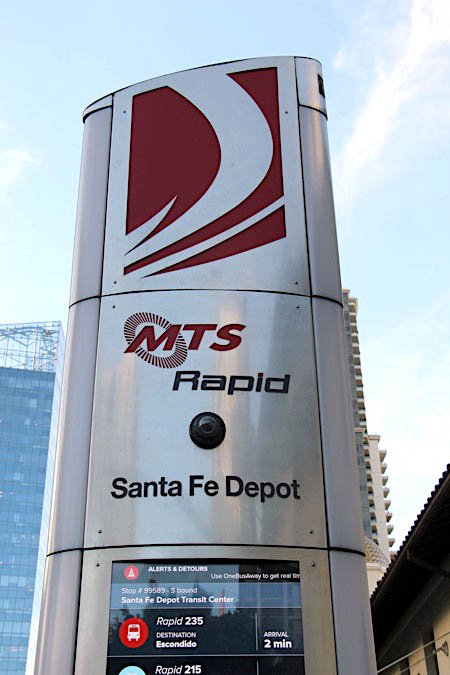
Aug 2015 / RWH
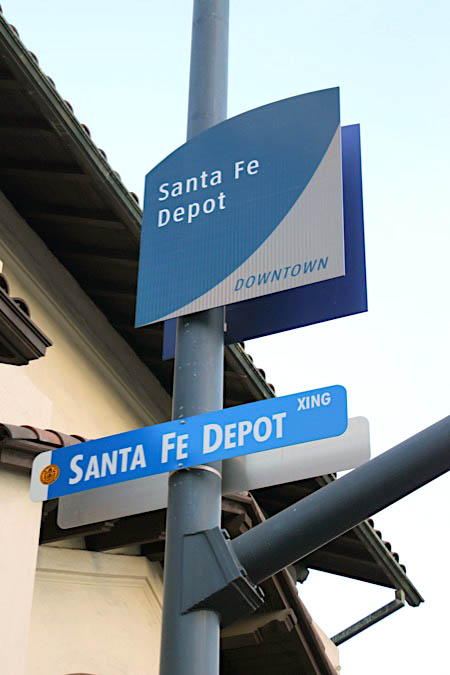
Aug 2015 / RWH

San Diego, Ca / Aug 2015 / RWH

Aug 2015 / RWH

San Diego, Ca / Aug 2015 / RWH
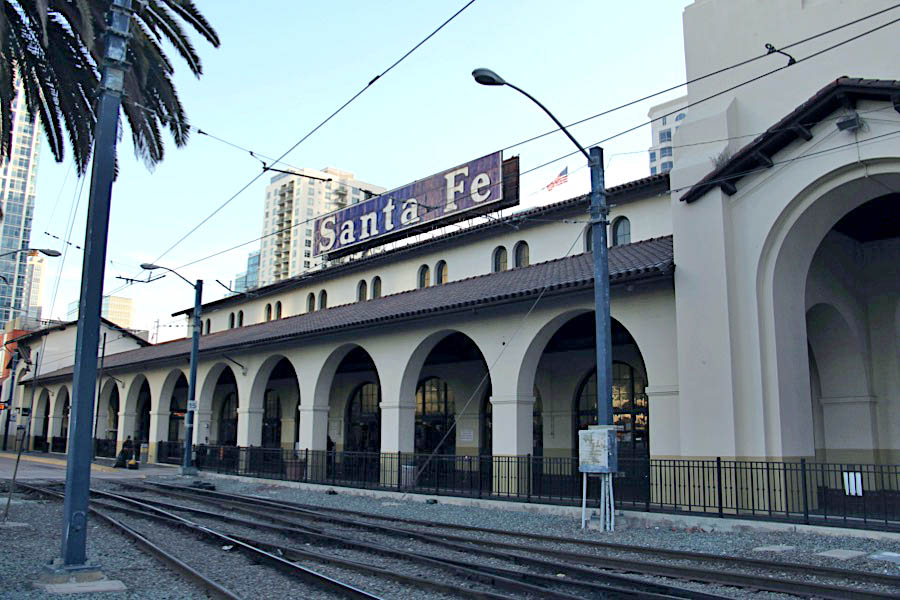
San Diego, Ca / Aug 2015 / RWH
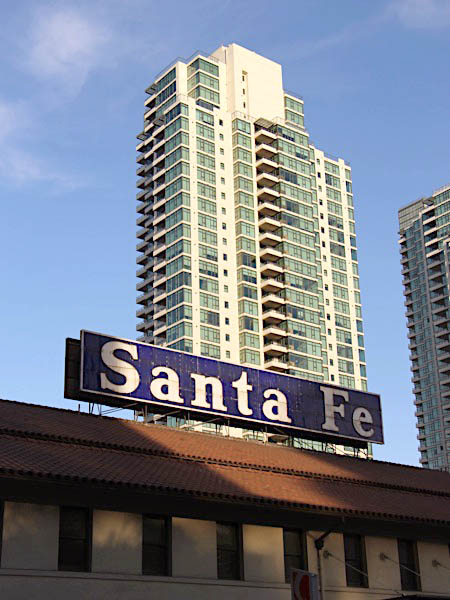
Aug 2015 / RWH

Aug 2015 / RWH
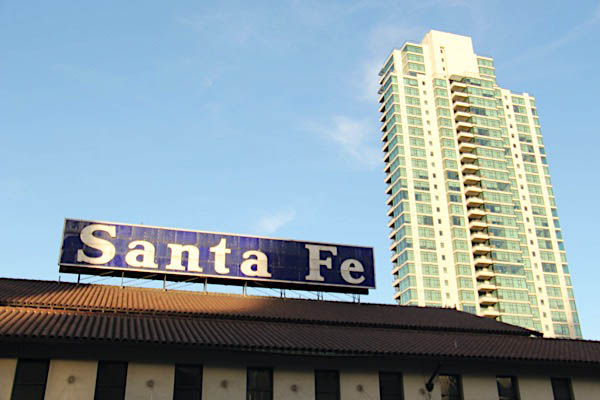
Aug 2015 / RWH
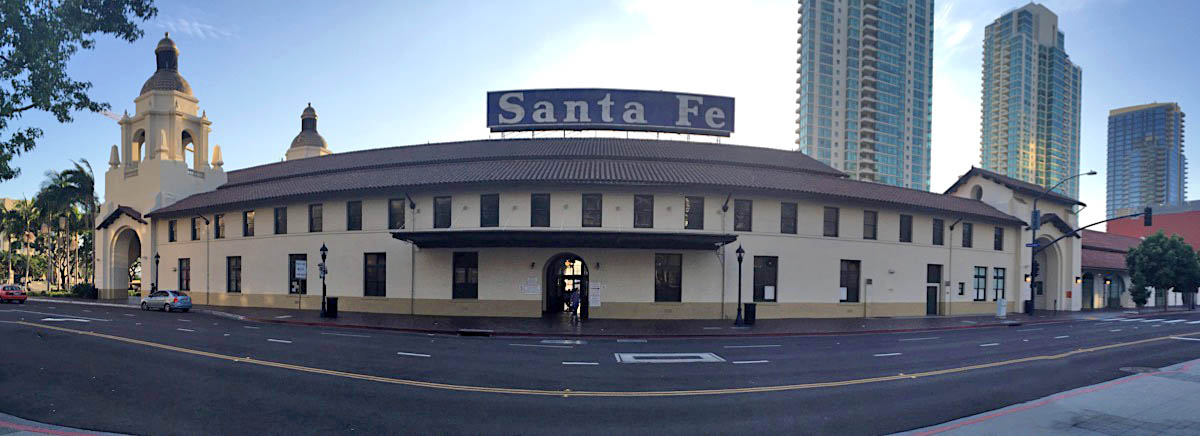
San Diego, Ca / Aug 2015 / RWH
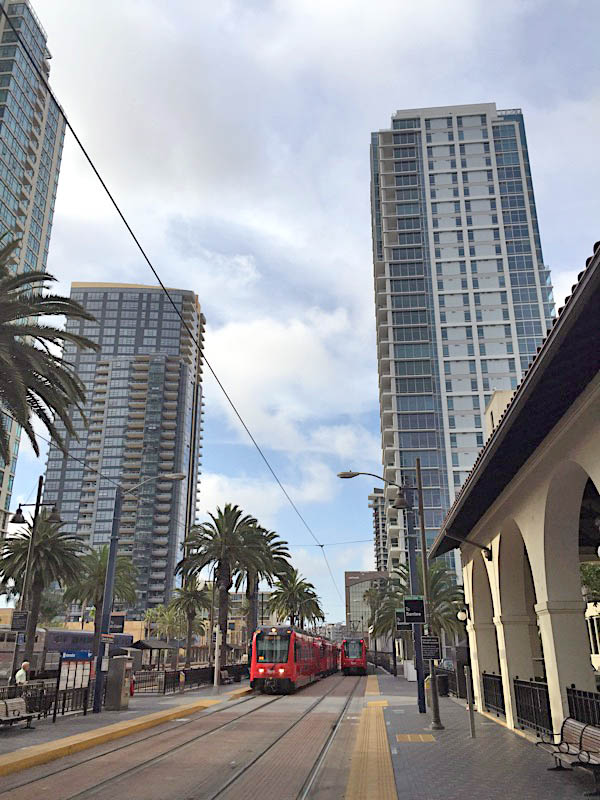
Aug 2015 / RWH
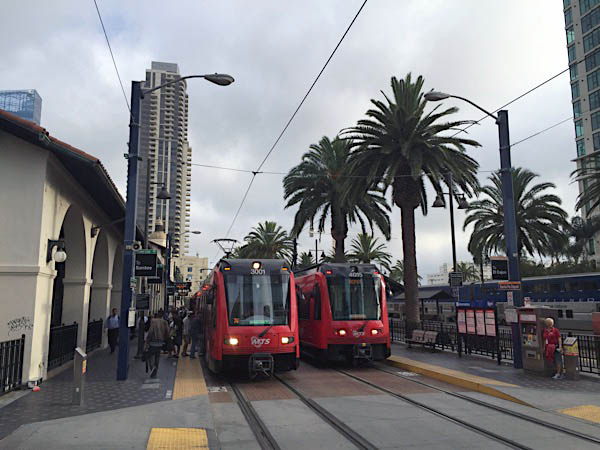
San Diego, Ca / Aug 2015 / RWH
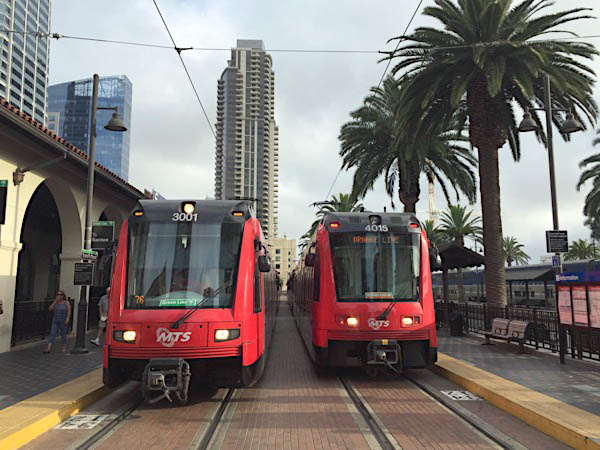
San Diego, Ca / Aug 2015 / RWH

San Diego, Ca / Aug 2015 / RWH

See also these scrapbooks related to the historic Santa Fe Depot:
 America Plaza Station
America Plaza Station
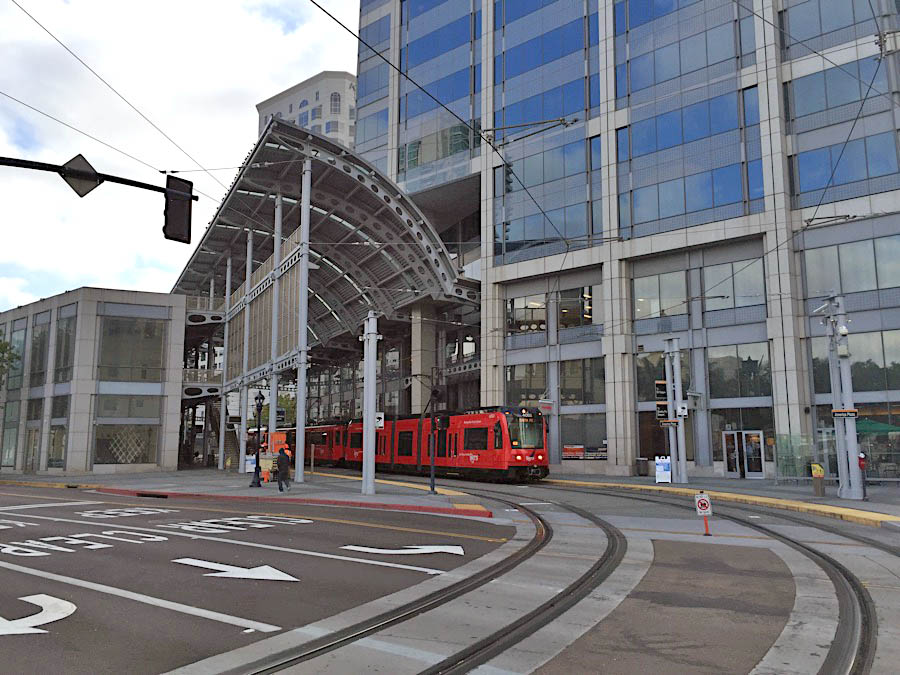
San Diego, Ca / Aug 2015 / RWH
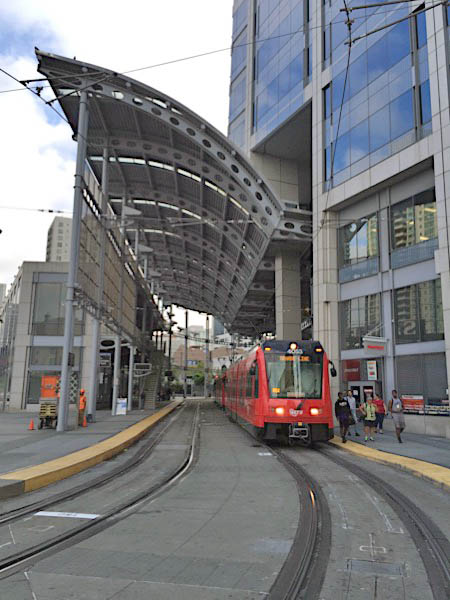
Aug 2015 / RWH

Click to see the America Plaza Station area plotted on a Google Maps page
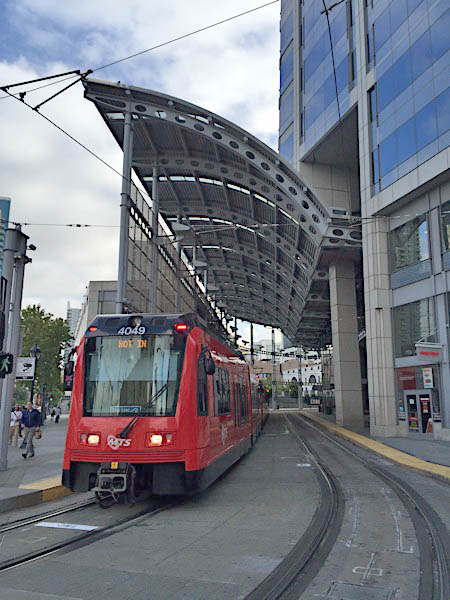
Aug 2015 / RWH
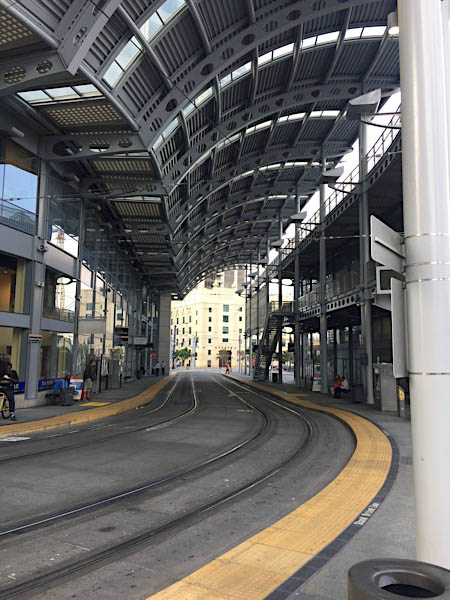
Aug 2015 / RWH
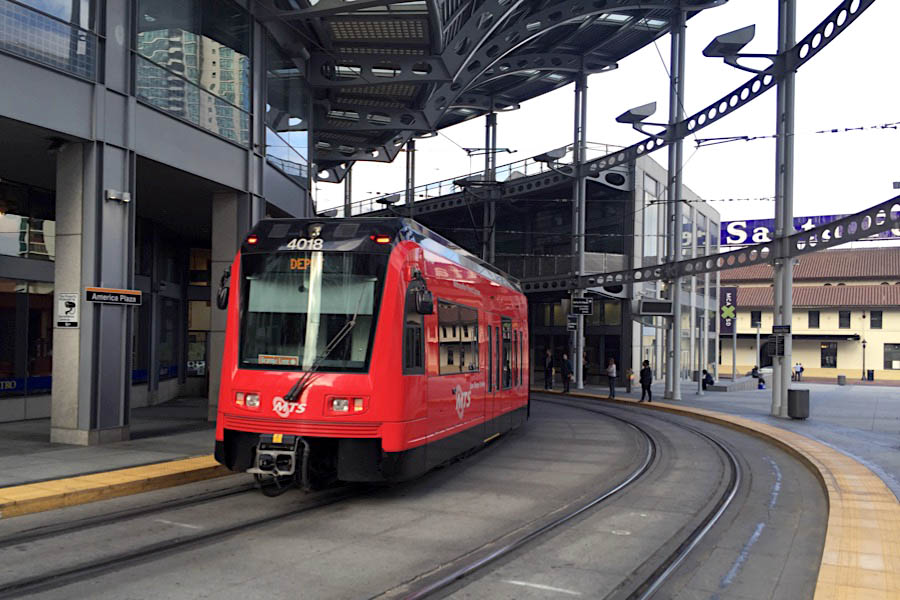
San Diego, Ca / Aug 2015 / RWH
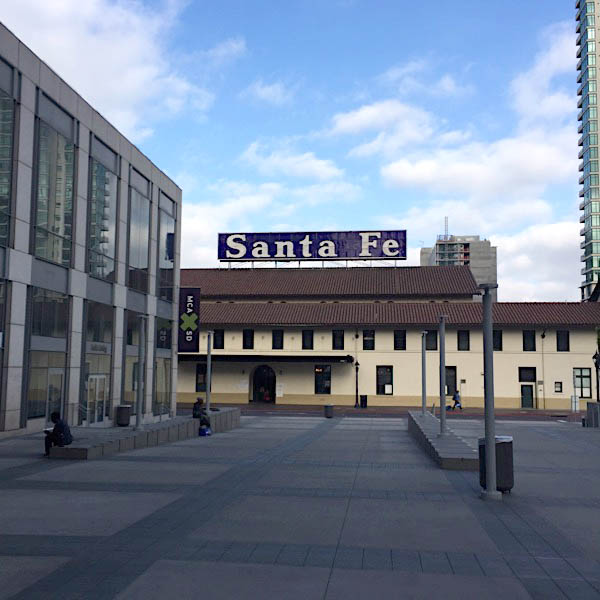
Aug 2015 / RWH
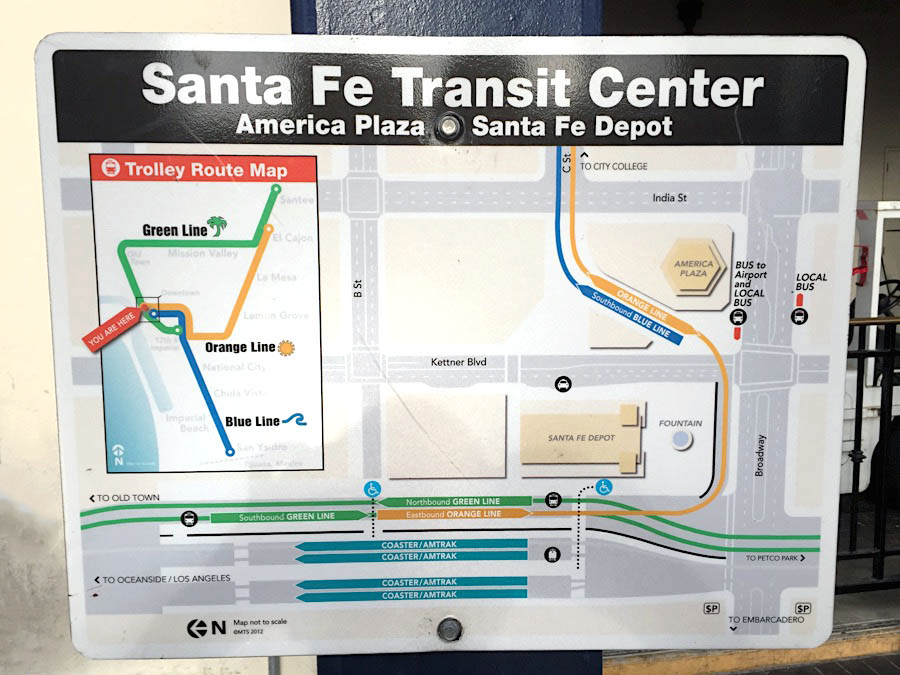
Aug 2015 / RWH
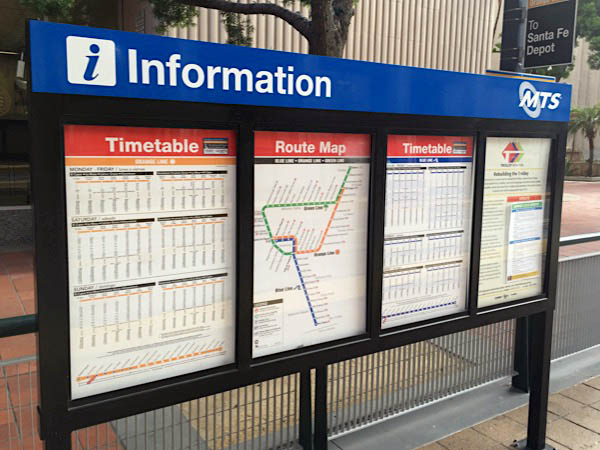
Aug 2015 / RWH
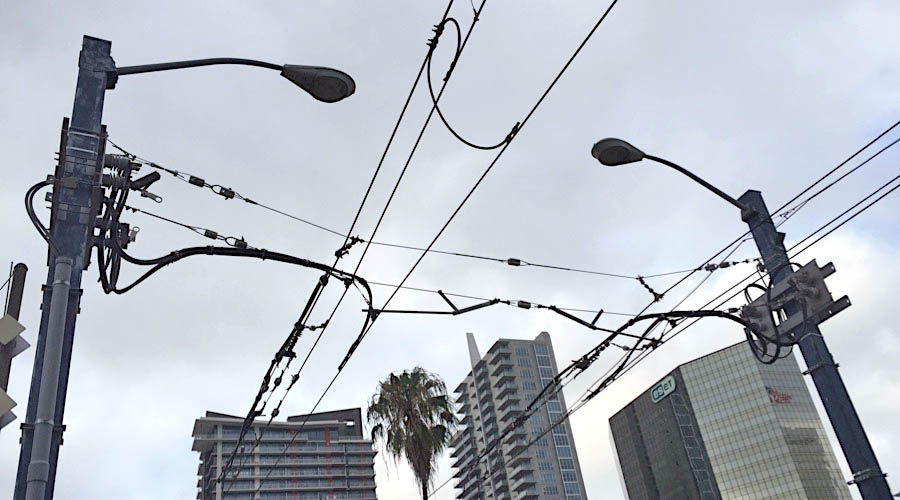
Aug 2015 / RWH
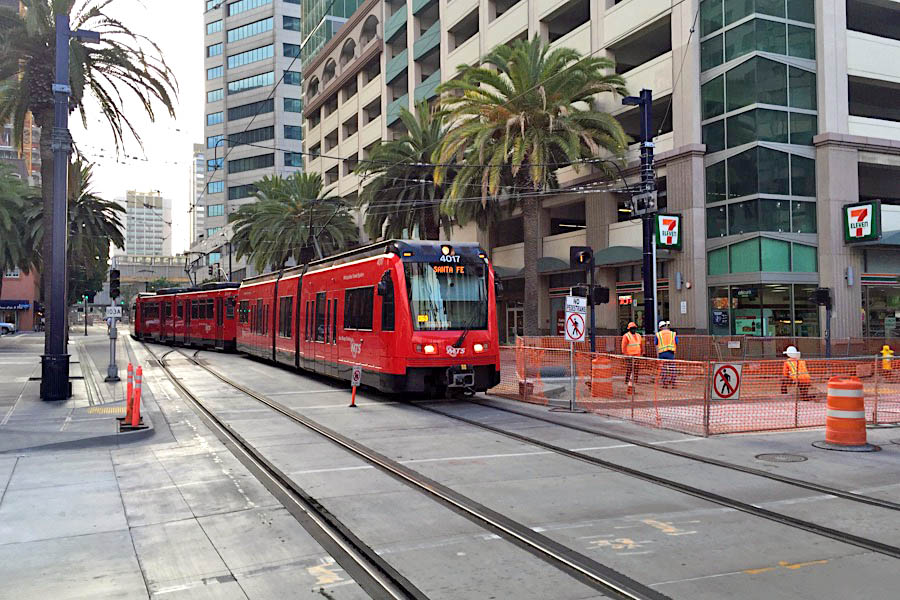
San Diego, Ca / Aug 2015 / RWH
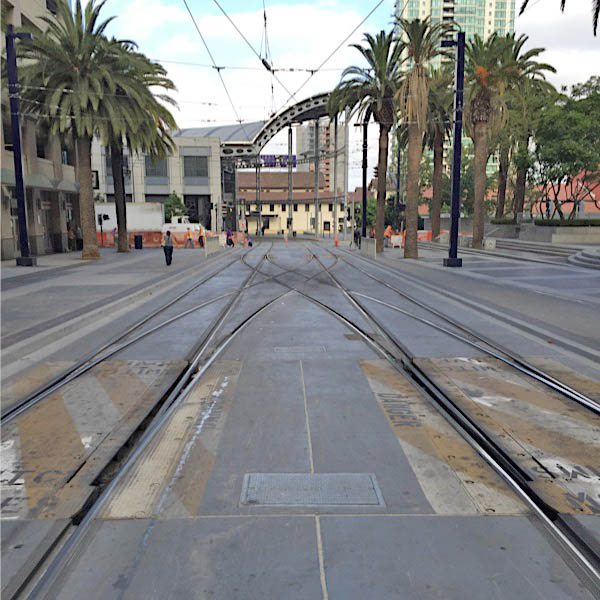
San Diego, Ca / Aug 2015 / RWH

Aug 2015 / RWH
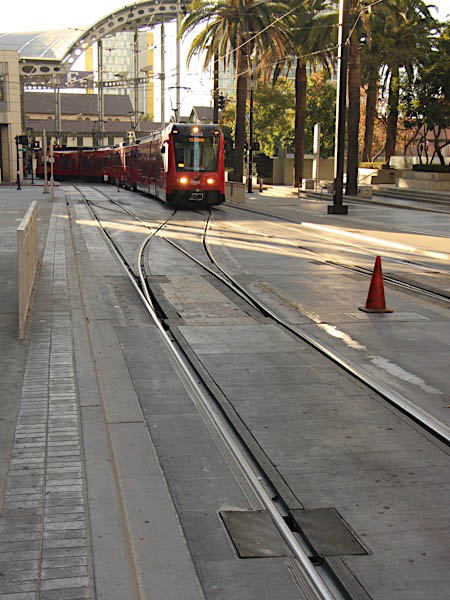
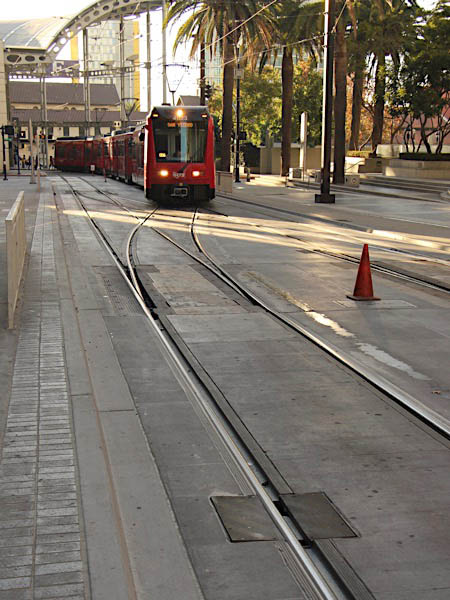
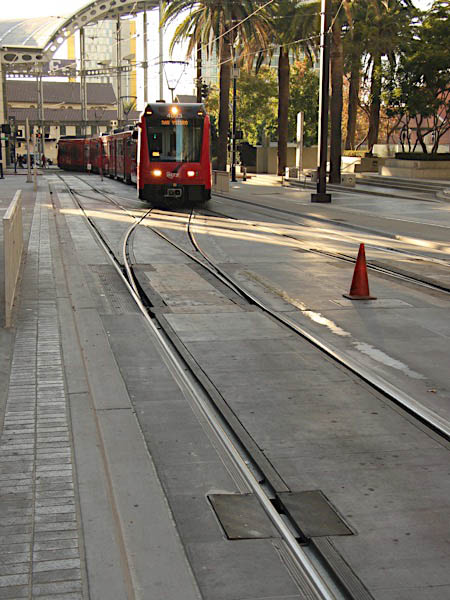
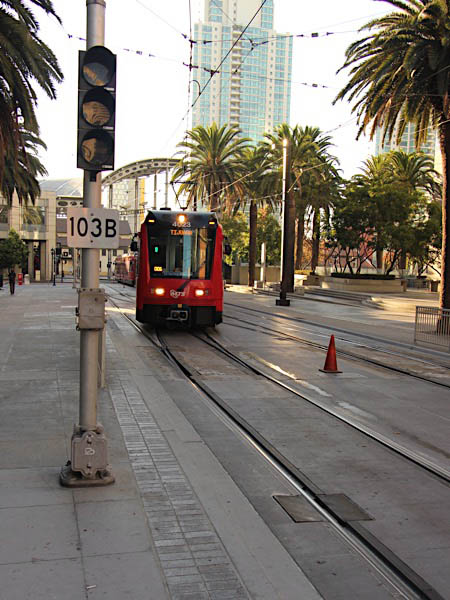
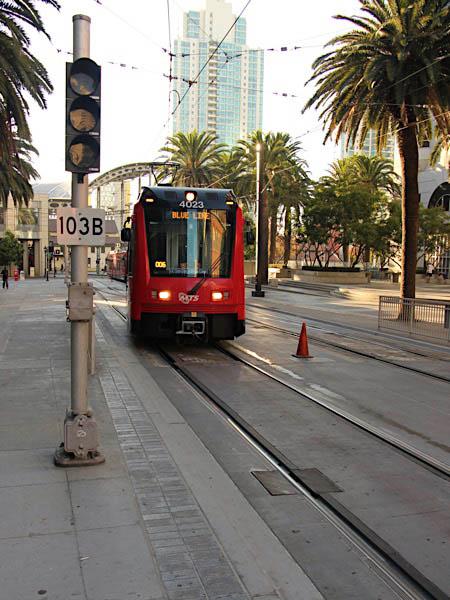

San Diego, Ca / Oct 2017 / RWH
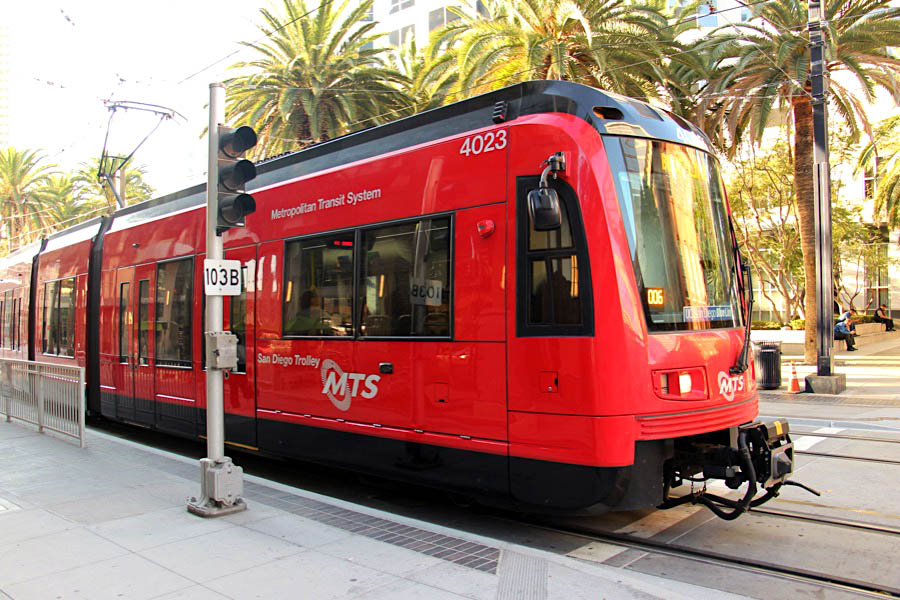
San Diego, Ca / Oct 2017 / RWH
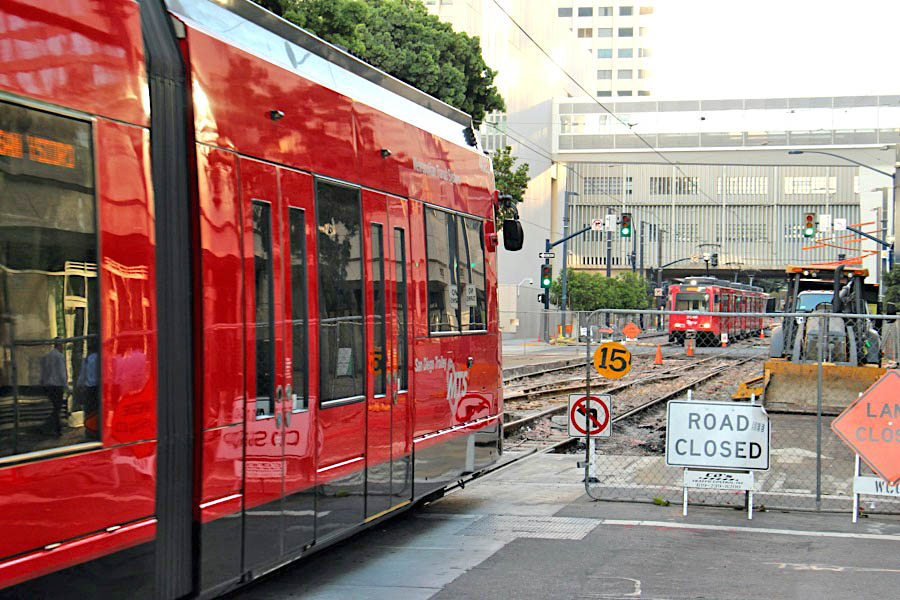
San Diego, Ca / Oct 2017 / RWH
 San Ysidro Transit Center
San Ysidro Transit Center

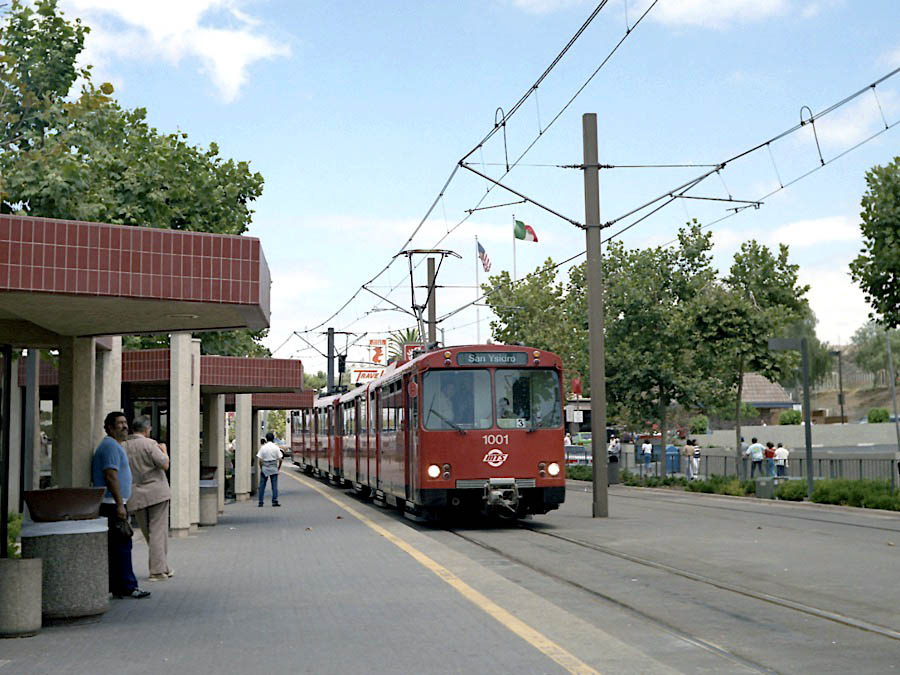
San Ysidro, Ca / Aug 1987 / JCH

Click to see the San Ysidro Transit Center plotted on a Google Maps page
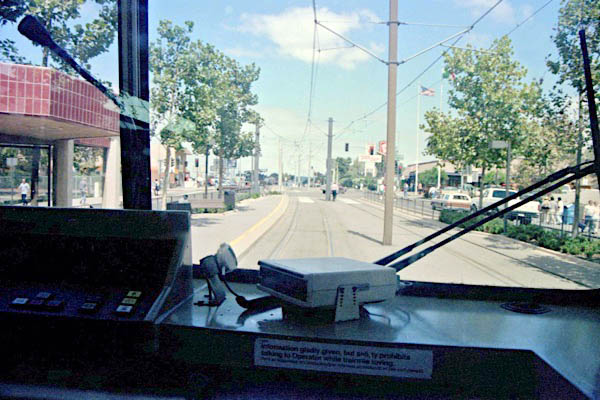
San Ysidro, Ca / Aug 1987 / RWH

San Ysidro, Ca / Aug 1987 / RWH

San Ysidro, Ca / Aug 1987 / JCH

San Ysidro, Ca / Aug 1987 / JCH
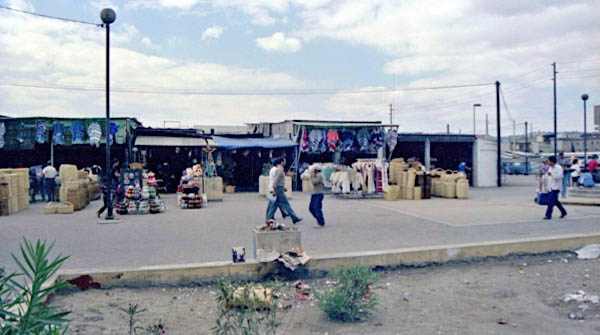
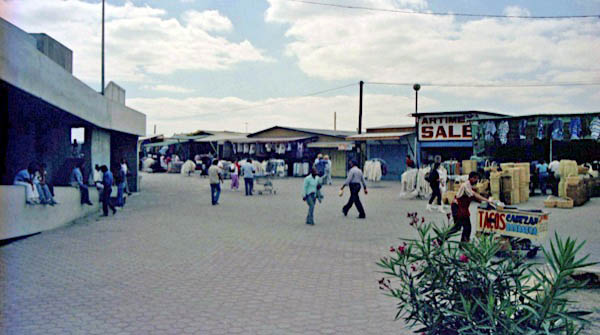
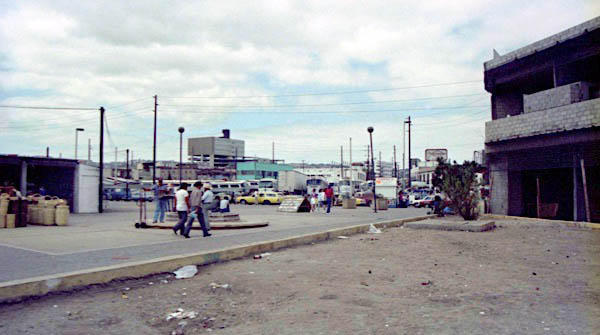
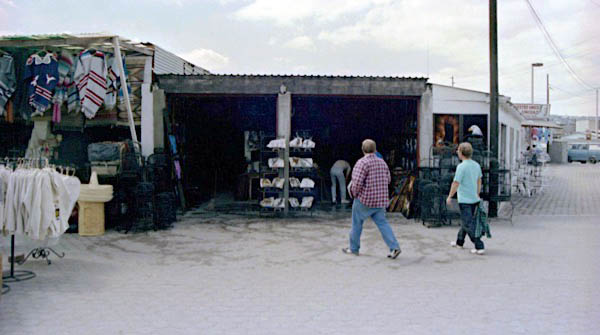
Tijuana, Mexico / Aug 1987 / RWH
 Scrapbook
Scrapbook
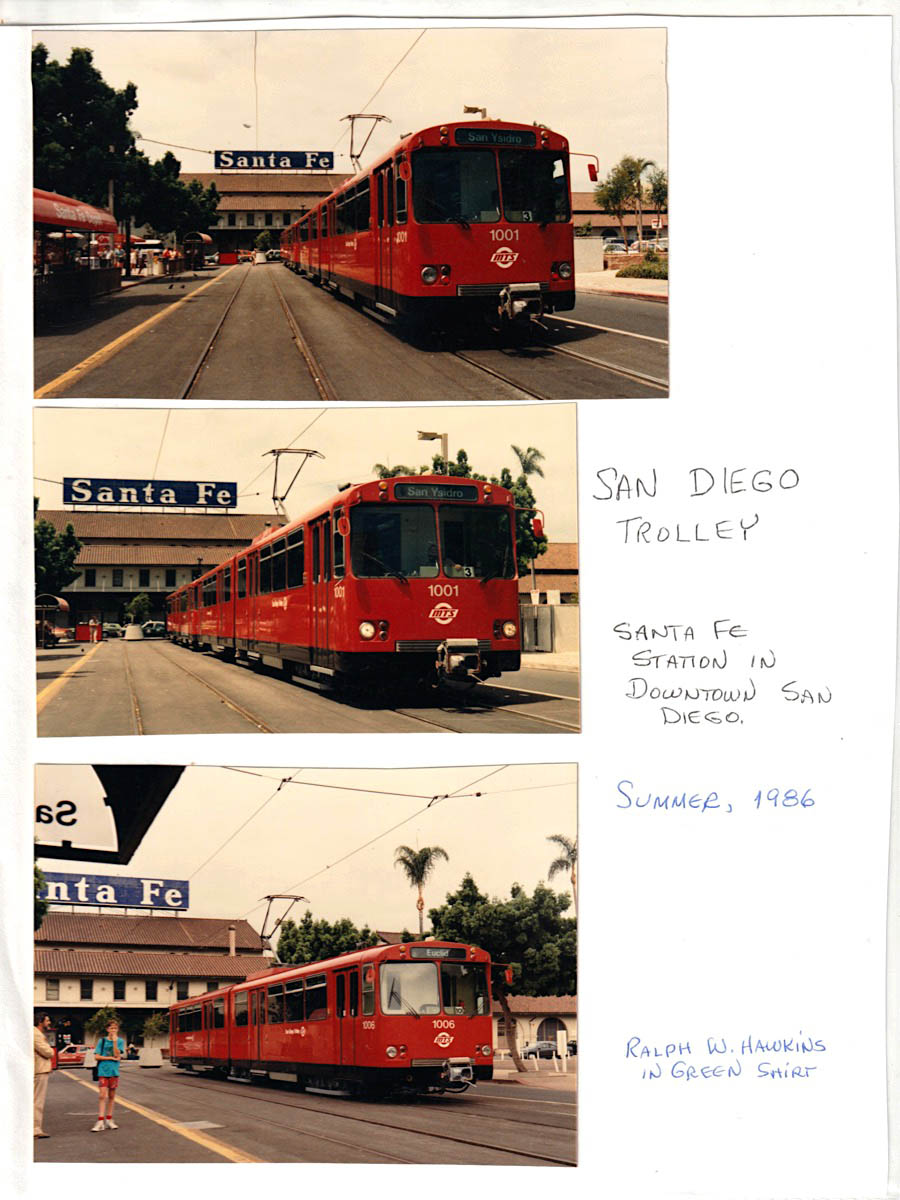
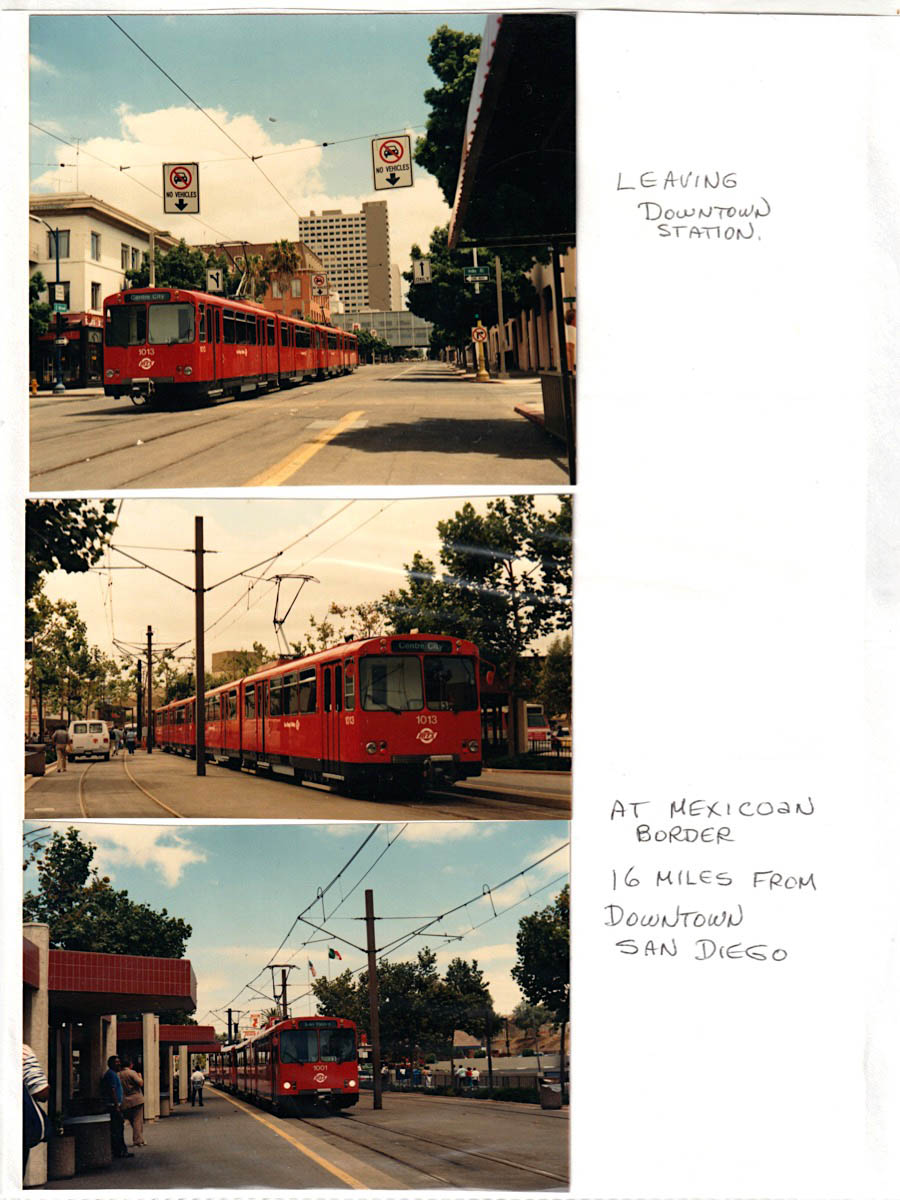
all pages from San Diego Trolley scrapbook / JCH
 Lagniappe
Lagniappe
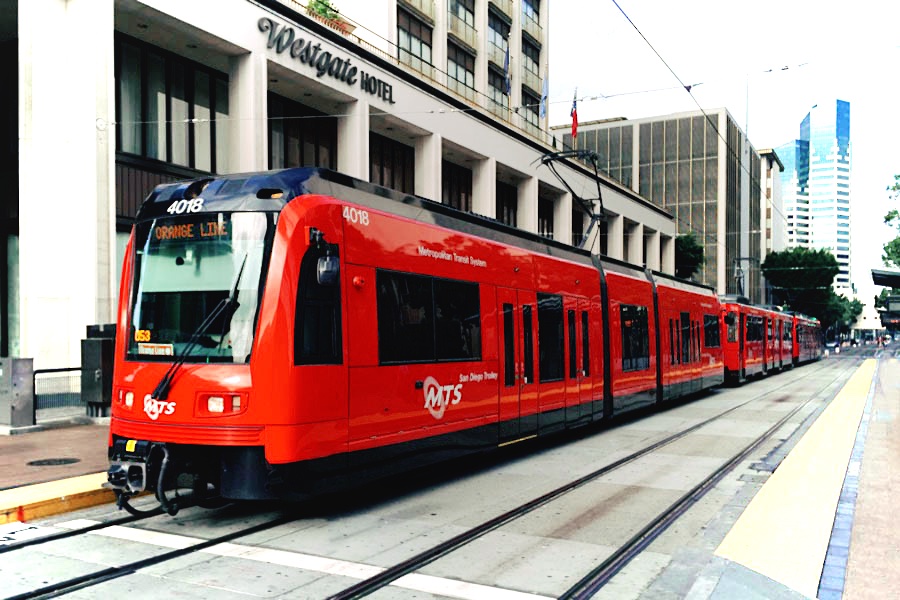
The Future Has Arrived
San Diego, Ca / Aug 2015 / RWH
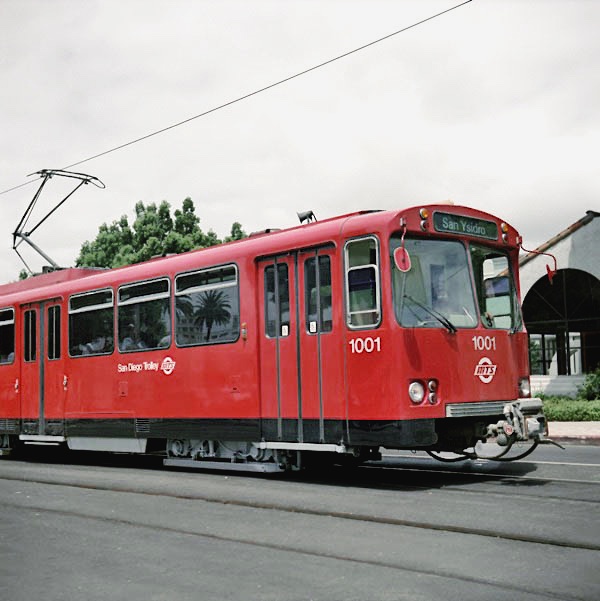
The Dusseldorf Design
San Diego, Ca / Aug 1987 / JCH
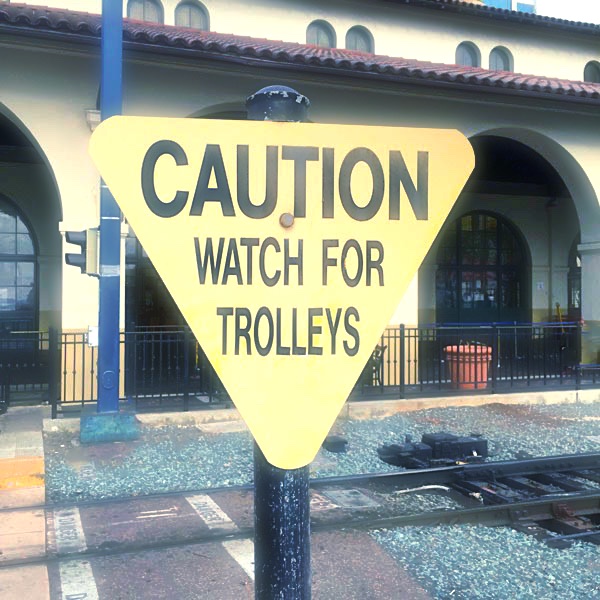
Trolley Watchers
San Diego, Ca / Aug 2015 / RWH
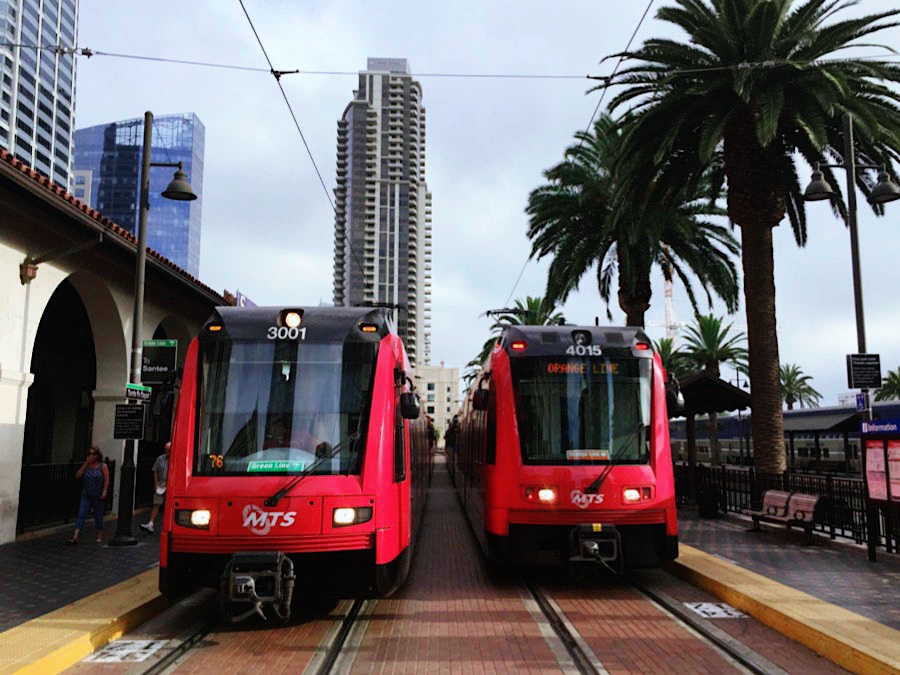
Rush Hour
San Diego, Ca / Aug 2015 / RWH
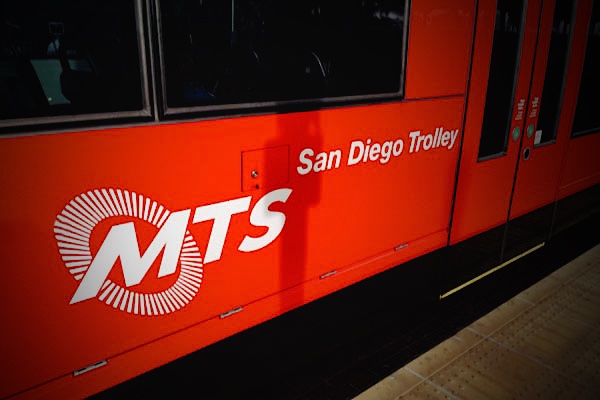
Magnificent Trolley Service
San Diego, Ca / Aug 2015 / RWH
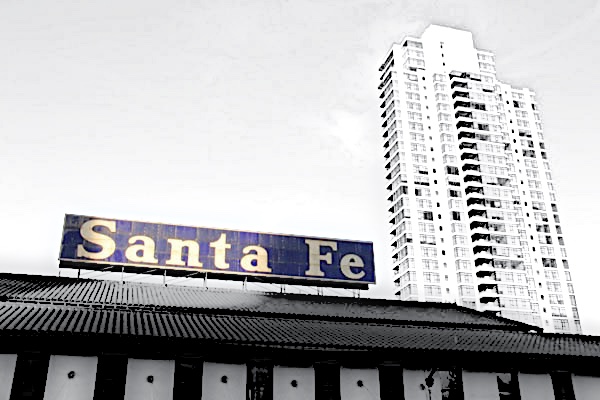
Atchison Outpost
San Diego, Ca / Aug 2015 / RWH
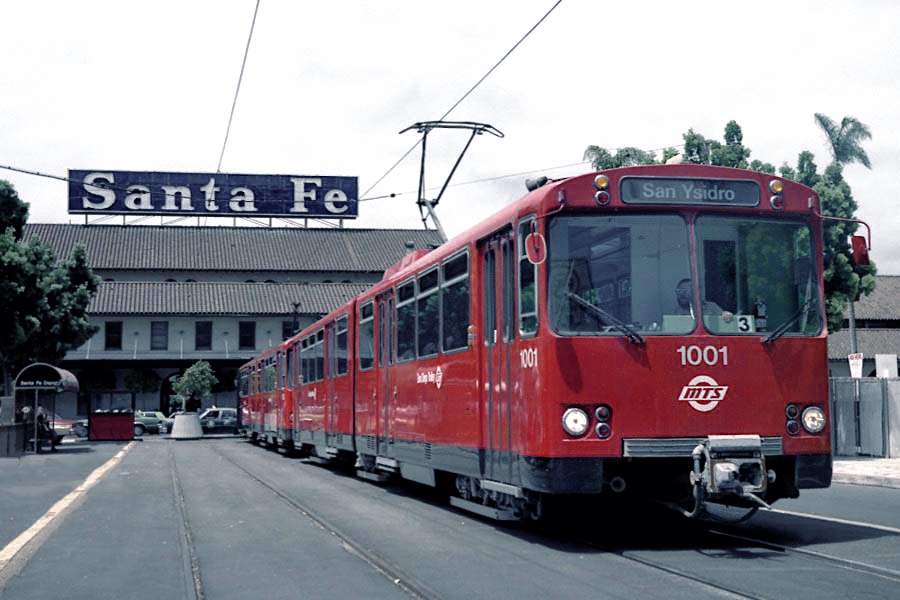
San Ysidro Bound
San Diego, Ca / Aug 1987 / JCH
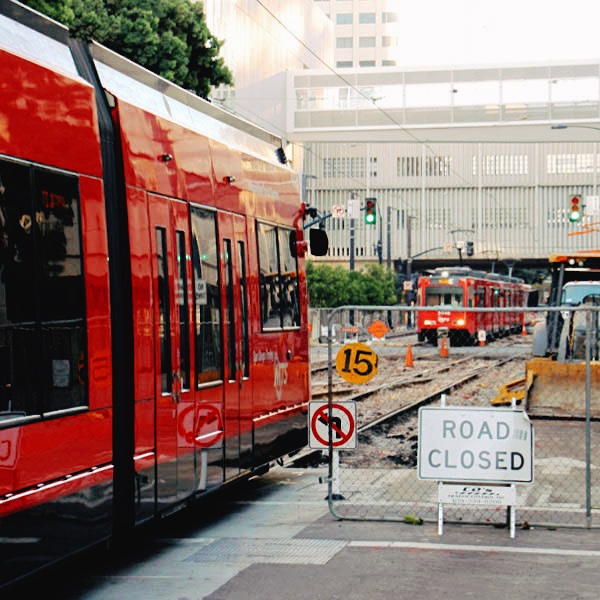
Midday Meet Cute
San Diego, Ca / Oct 2017 / RWH
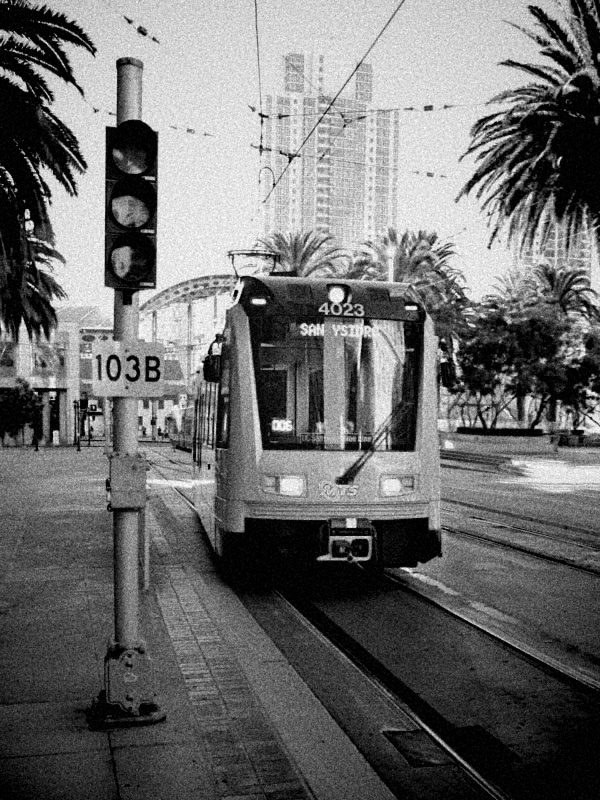
Signal 103B
Aug 2015 / RWH
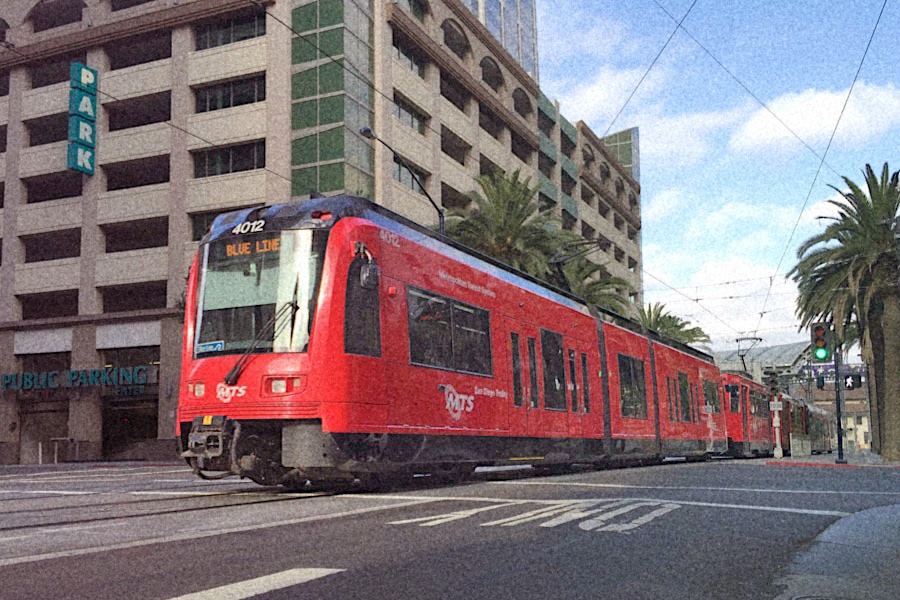
Downtown Glide
San Diego, Ca / Aug 2015 / RWH

No Vehicles Allowed
San Diego, Ca / Aug 1987 / JCH
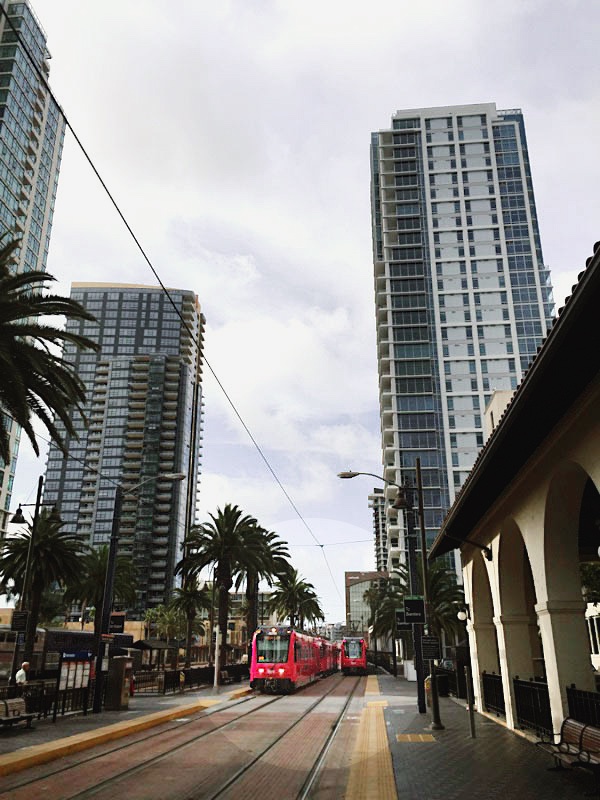
Down in the (Urban) Valley
San Diego, Ca / Oct 2017 / RWH
 Snapshots
Snapshots
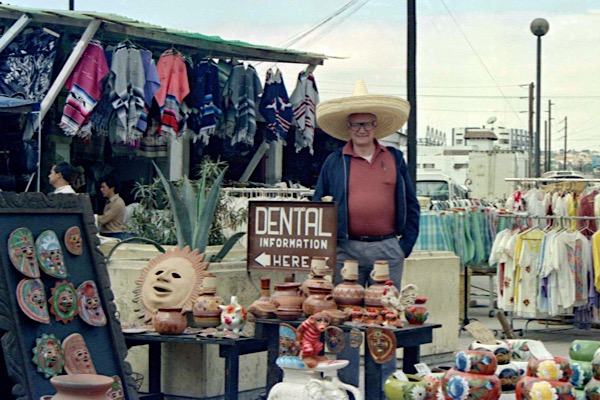
San Ysidro, Ca / Aug 1987 / RWH

San Ysidro, Ca / Aug 1987 / JCH

San Diego, Ca / Aug 2015 / RWH

It turns out that my hotel for a late summer 2015 conference in San Diego was just across the street from the famous Santa Fe station. Seeing the iconic blue and white "Santa Fe" sign peering out from between the new condo skyscrapers all around made me realize: I was last in this city, and last at that station, some 28 years ago! Given the personal history of our wonderful 1987 family trip to SoCal, it was great fun to make my way across the street to catch all the rail action at the still-very-busy Amtrak and San Diego Trolley station. Funny, I had remembered the large depot being uncluttered, the track area open all the way out to the bayfront. But then I hit me: That was nearly 30 years ago. A lot has changed!
The station is now hidden among several high-rise residential and office developments, and the entire area has been redeveloped at least once, if not multiple times. But the depot building itself has not changed a bit, thank goodness. I caught an Amtrak push-pull Surfliner train in the station, and later a push-pull "Coaster" train as well. Both operations make use of the slant-front F59 units — not my favorite body style on a passenger locomotive, but that slant front and triple windshield look grows on a fan after awhile. I also caught several of the San Diego modern trolleys coming and going from the station area during my walk around. It was fun to snap lots of roster shots to update this page. After all, when is the next time I will be here in this city? Who knows. Maybe another 30 years from now?
I decided to take an evening ride from the old city center in San Diego down to the Mexican border, on the red trolley, retracing a ride I took with dad back in 1987. I have such good memories of that first to-the-border ride. Yet I remember the sense of dread I had as a kid, noted above: a fear of not getting back across the border without any papers! That was long before 9/11 and the tighter border controls. But I remember that the ride itself was quite fun, passing the Navy Yard and the ocean harbors, finally getting all the way down to the Mexican border. These days, the trolleys are much newer and even more modern looking than before. The right-of-way has clearly been upgraded and adjusted over the 30 years since my first visit, and most of the clientele on the ride south are clearly laborers and workers — not as many tourists as I remember. I got to the border plaza just as the sun was setting, so I stepped off, bought another ticket, and stepped back on for the return ride north. It was good fun, retracing those steps by re-riding that great route.
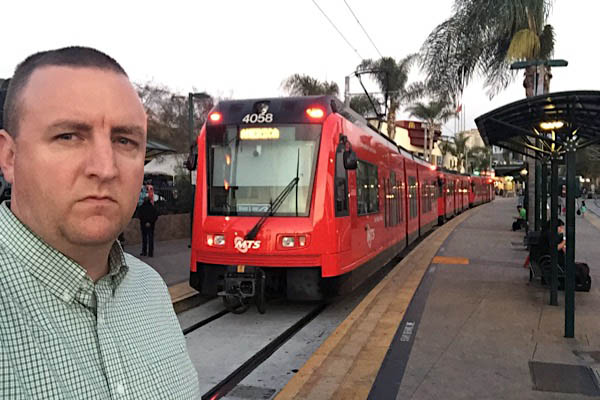
San Ysidro, Ca / Oct 2017 / RWH
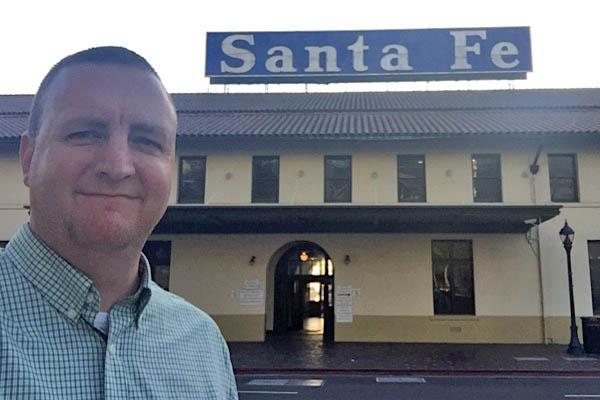
San Diego, Ca / Oct 2017 / RWH

 For more than 135 years, public transit has been serving the San Diego community and helping it thrive. The positive impacts of the San Diego Metropolitan Transit System (MTS) on our communities has been, and will continue to be, far-reaching. There are thousands of MTS employees who keep the fleet of nearly 1,000 vehicles maintained and operating every day. There are hundreds of thousands of people inside those vehicles that depend on transit to be productive. The all-electric Trolleys and near-zero emission buses reduce burdens associated with negative environmental impacts. And there are many more facts that show how our public transit system is a vital component to our region.
For more than 135 years, public transit has been serving the San Diego community and helping it thrive. The positive impacts of the San Diego Metropolitan Transit System (MTS) on our communities has been, and will continue to be, far-reaching. There are thousands of MTS employees who keep the fleet of nearly 1,000 vehicles maintained and operating every day. There are hundreds of thousands of people inside those vehicles that depend on transit to be productive. The all-electric Trolleys and near-zero emission buses reduce burdens associated with negative environmental impacts. And there are many more facts that show how our public transit system is a vital component to our region.
